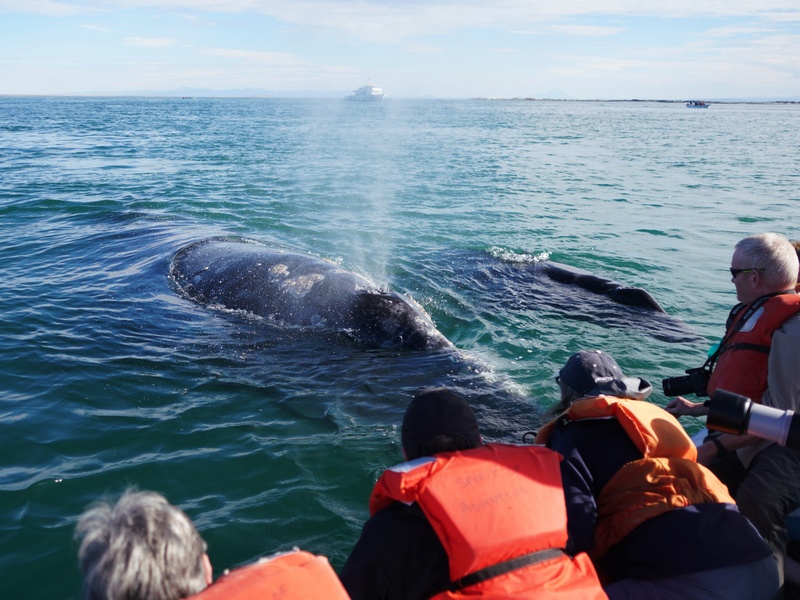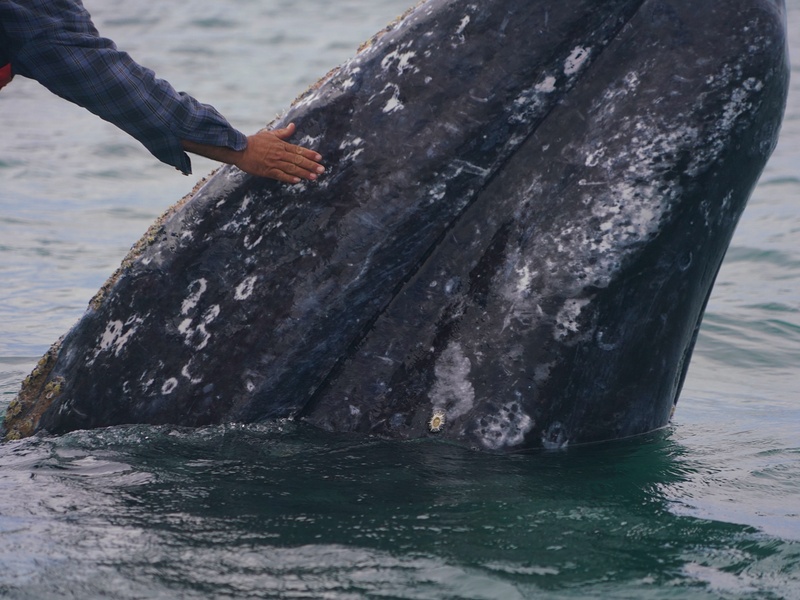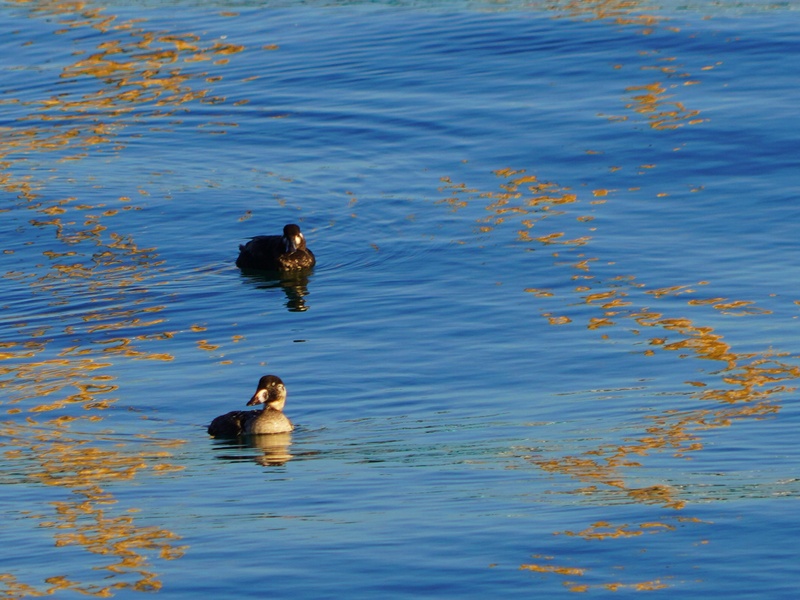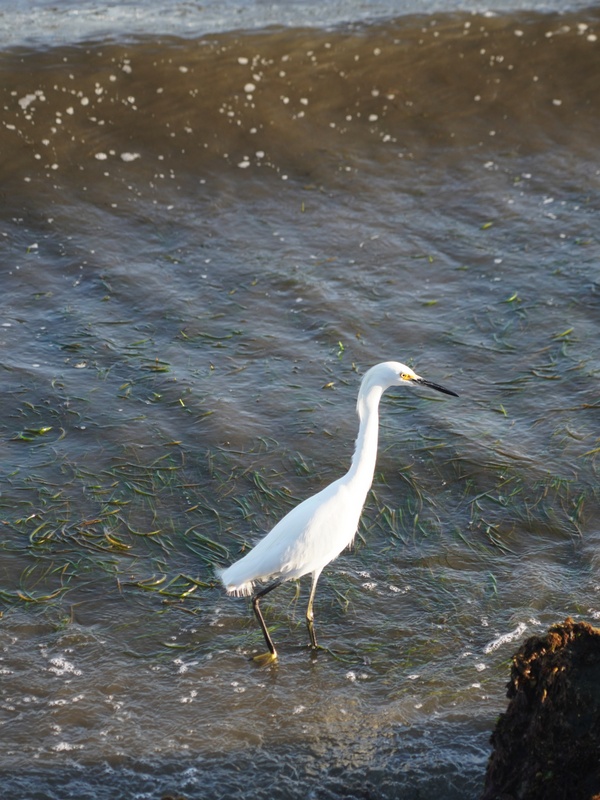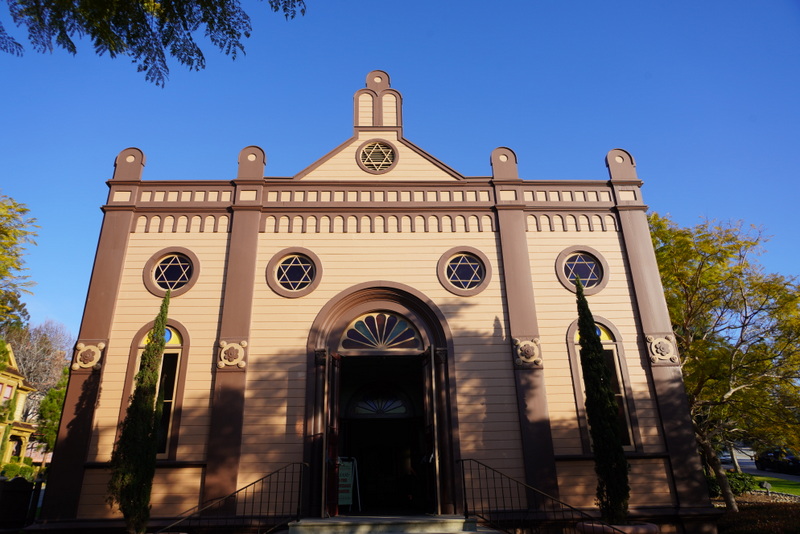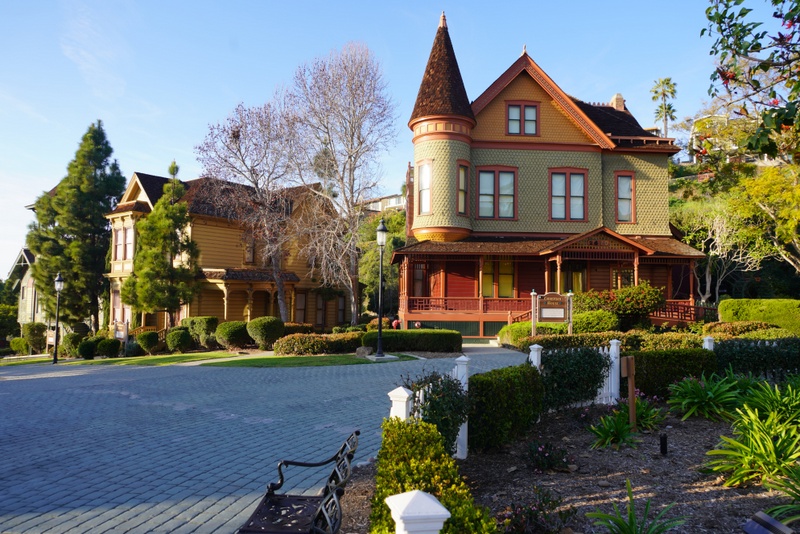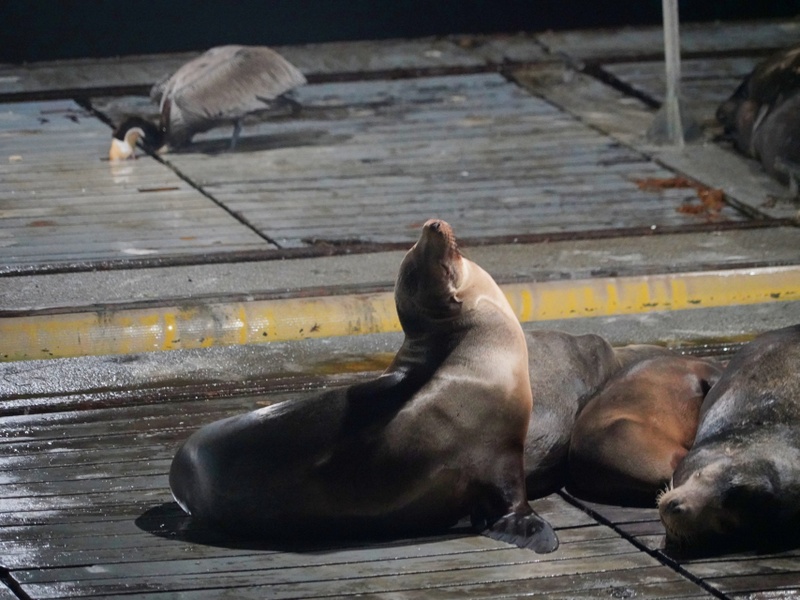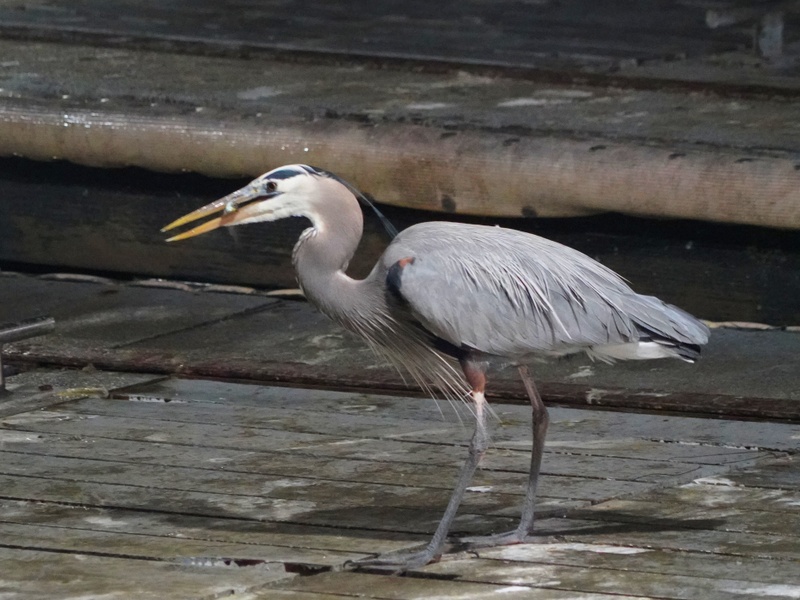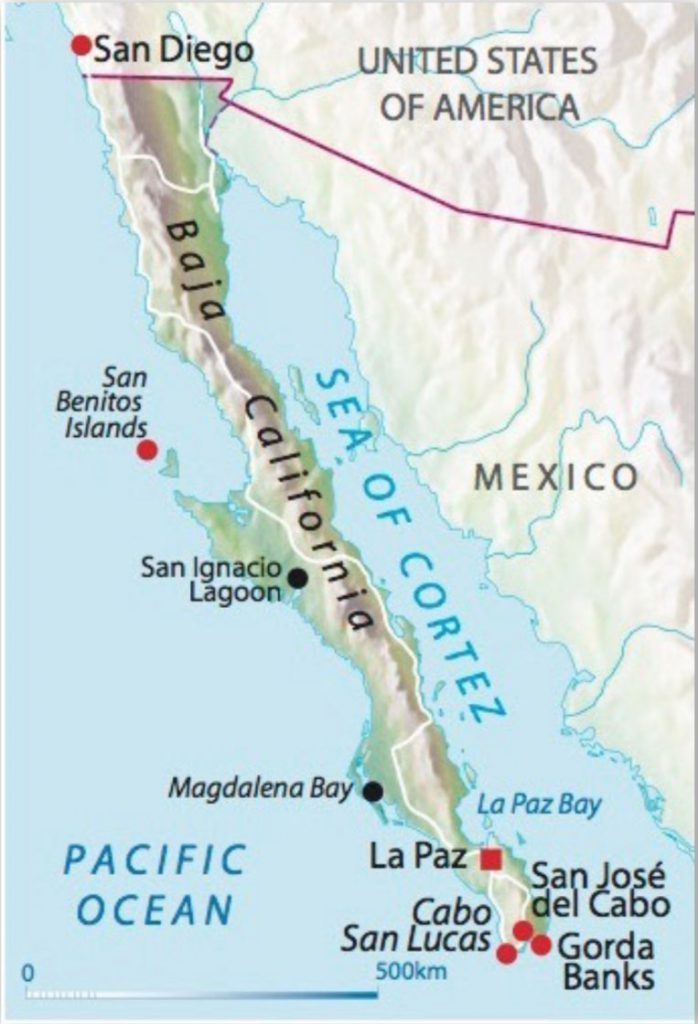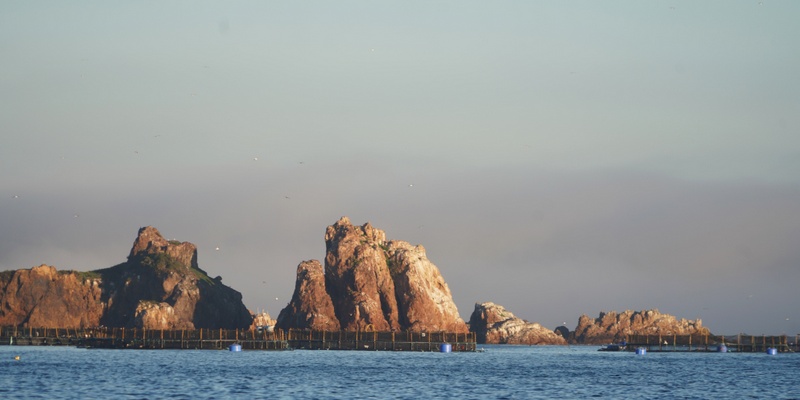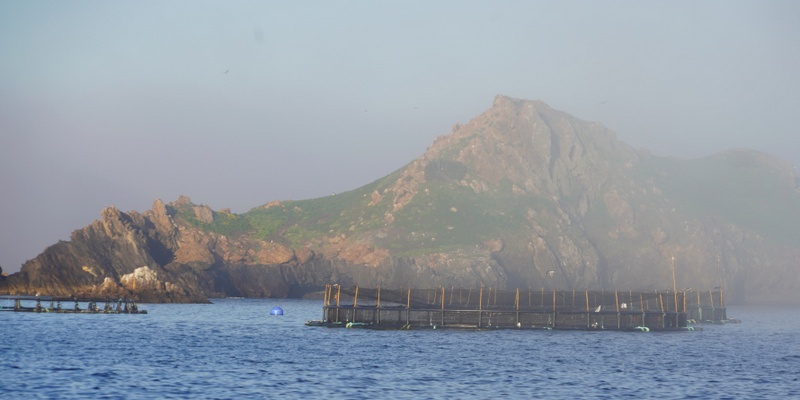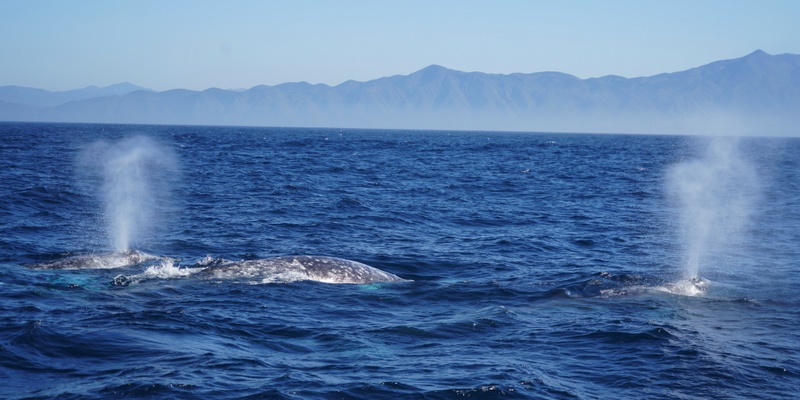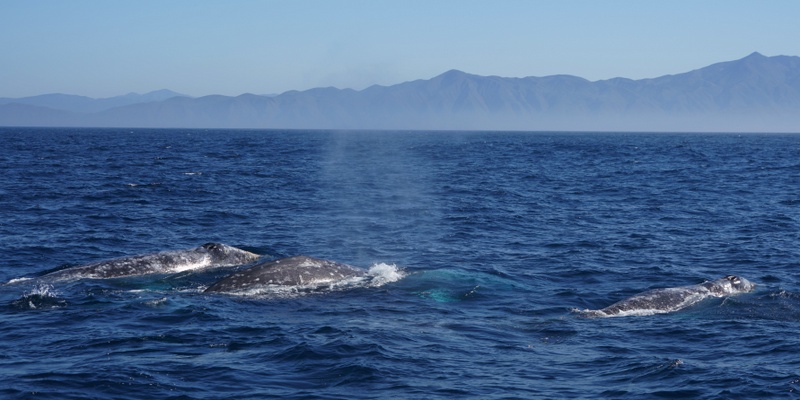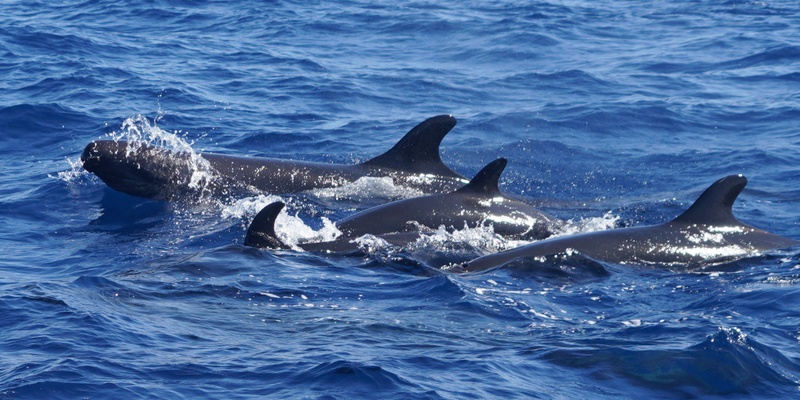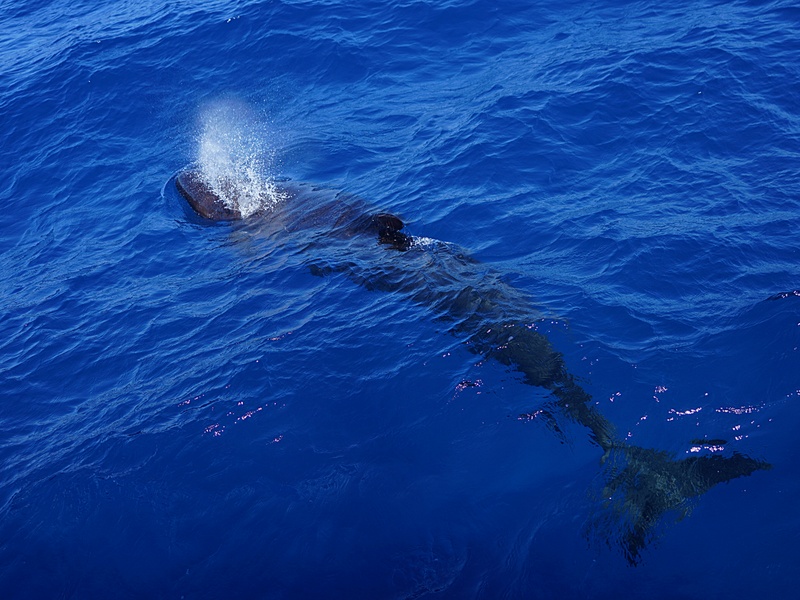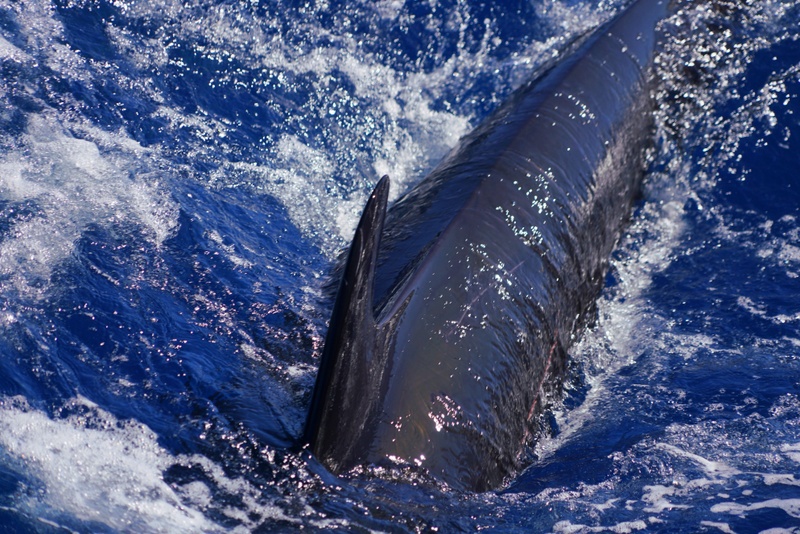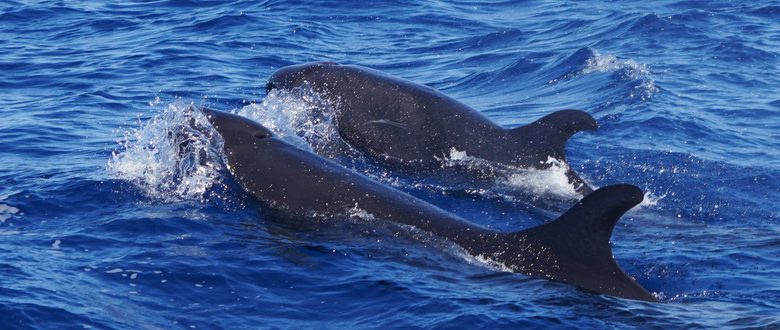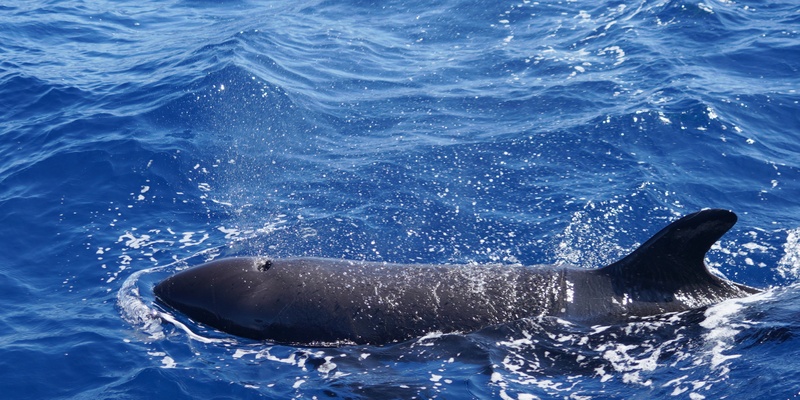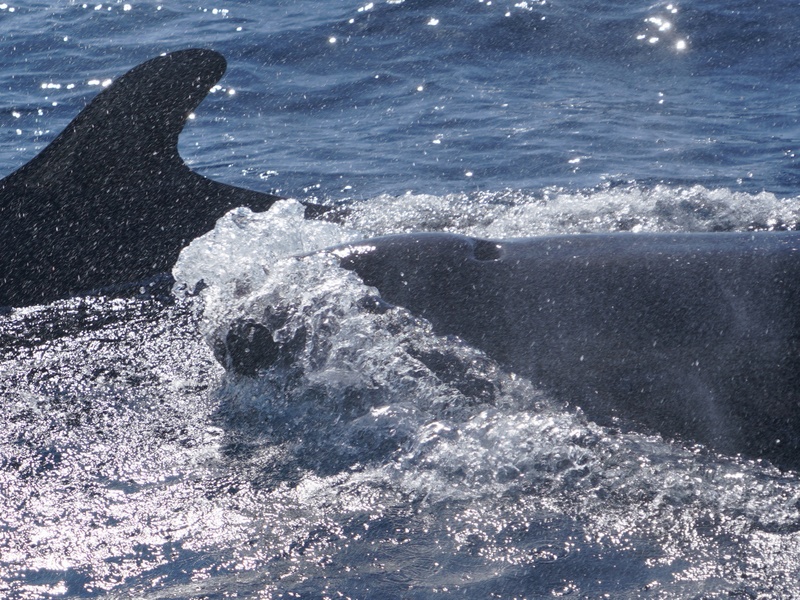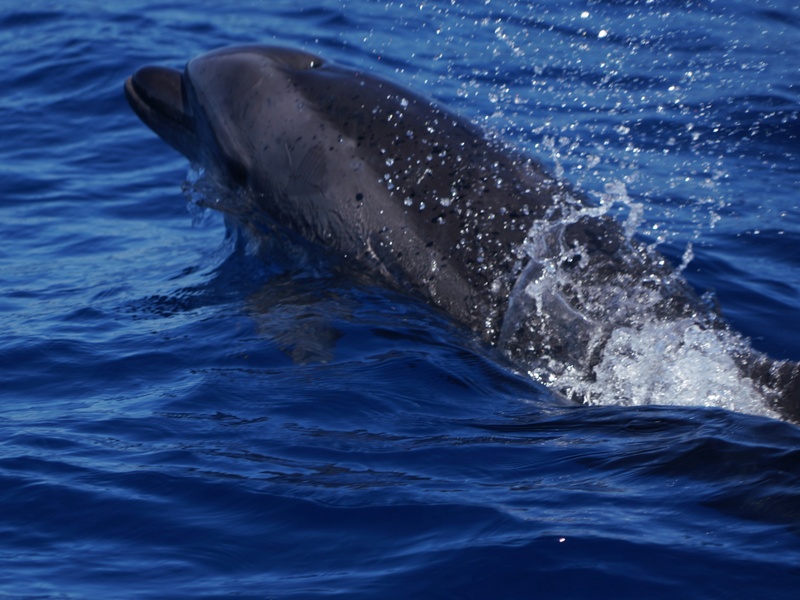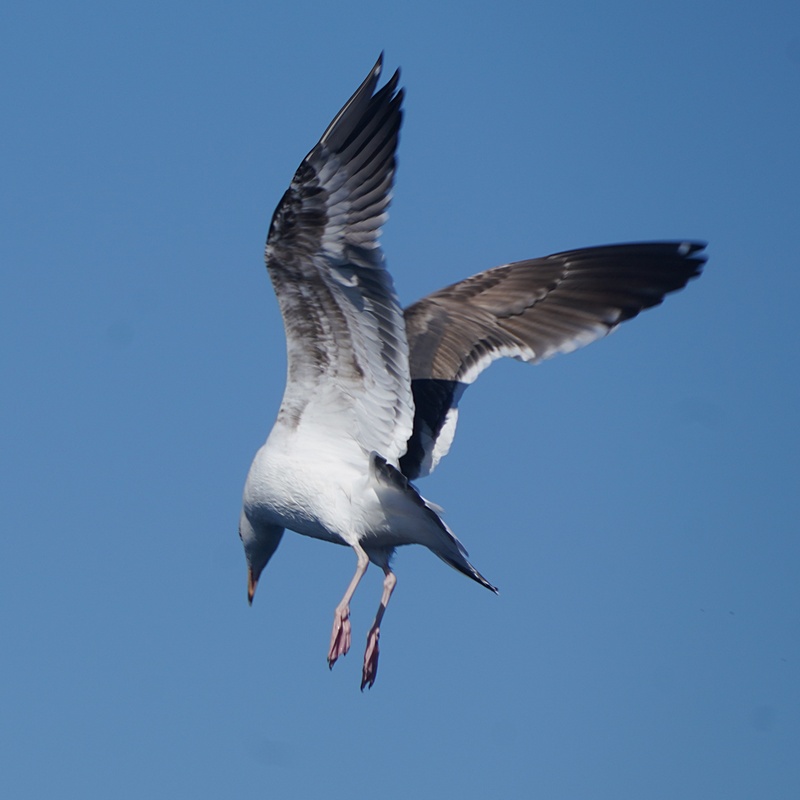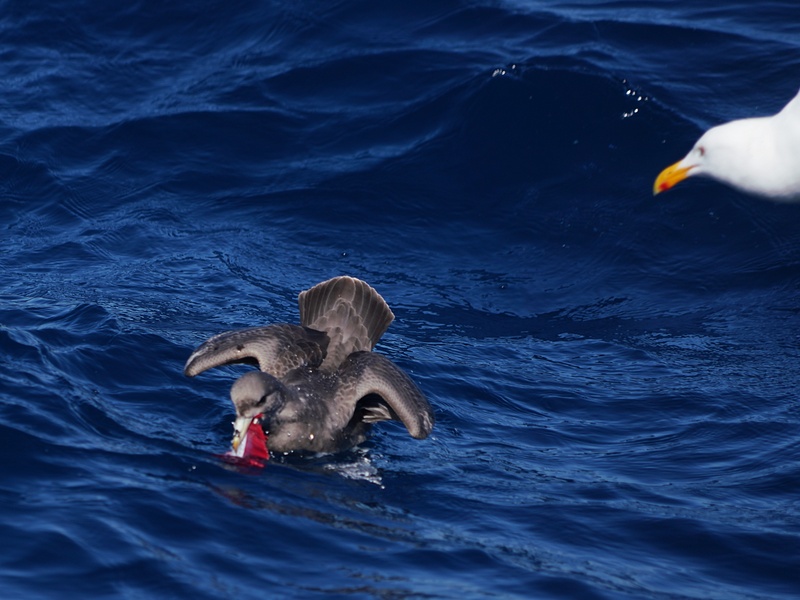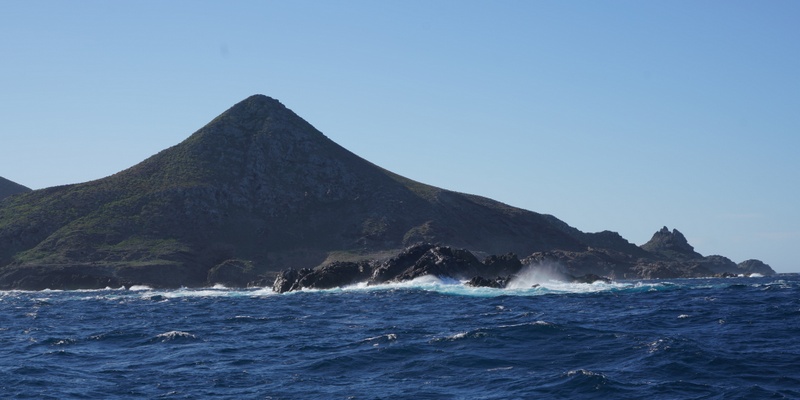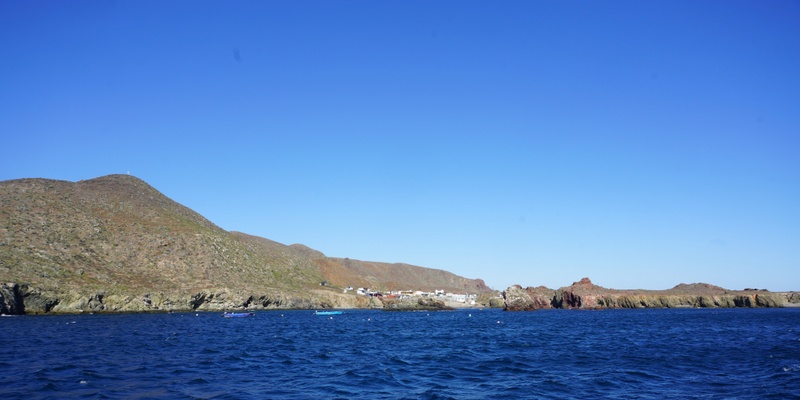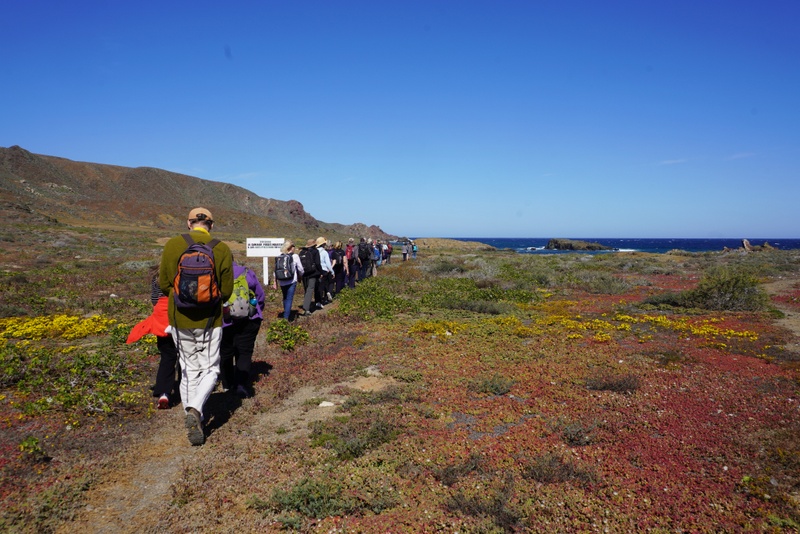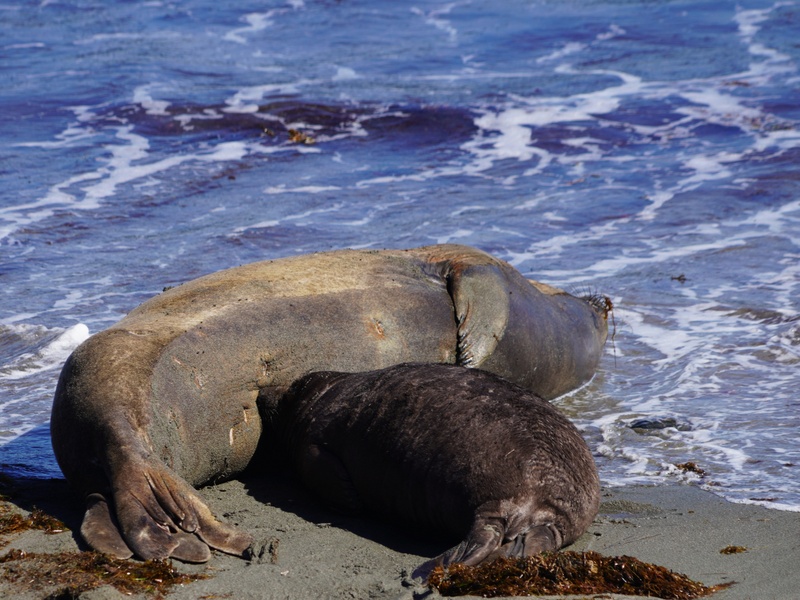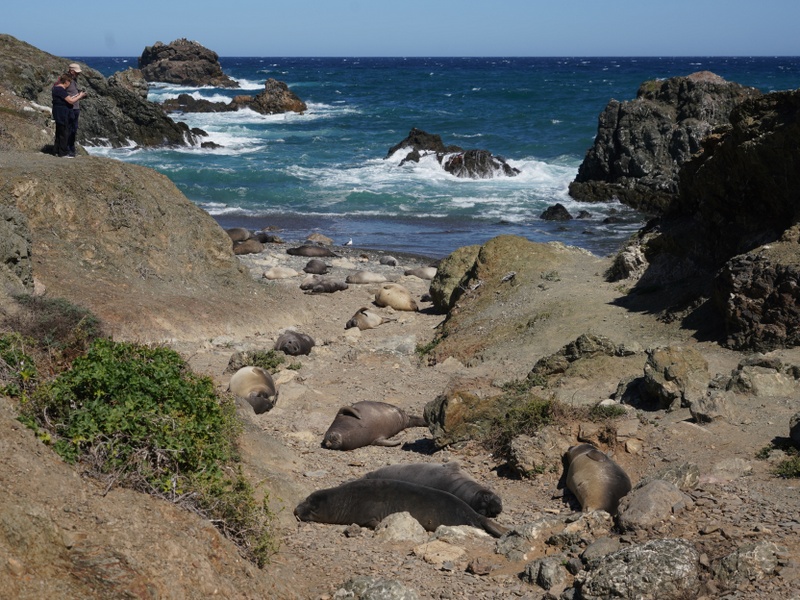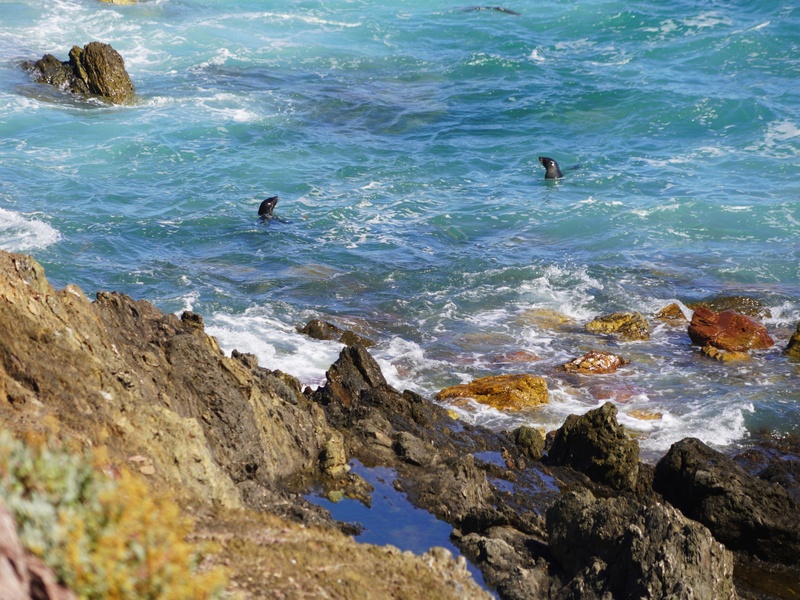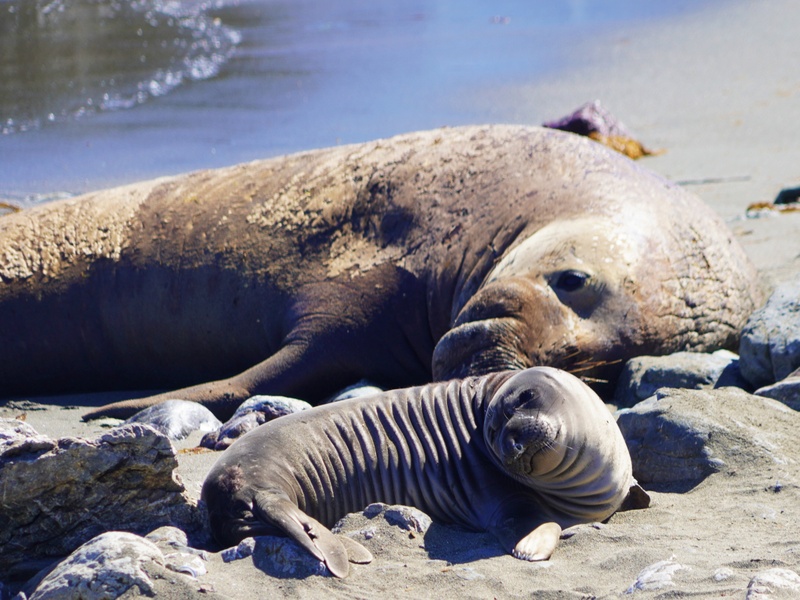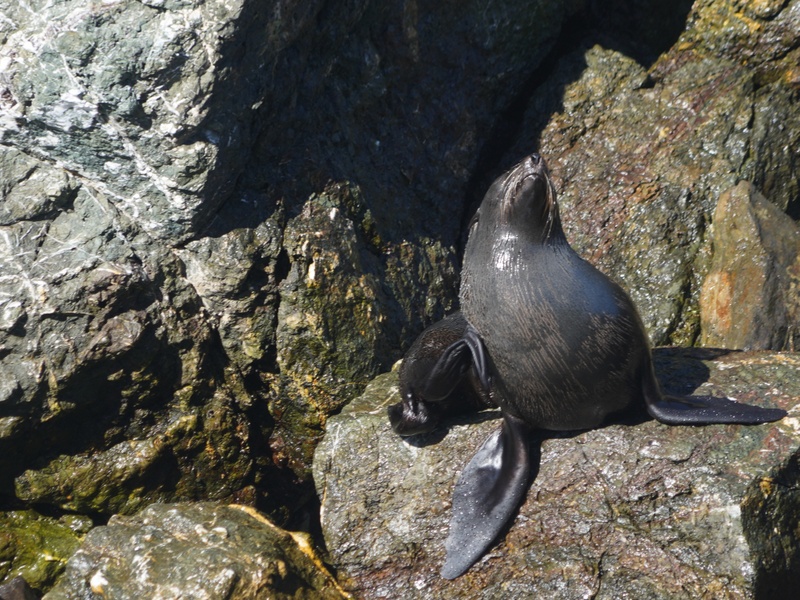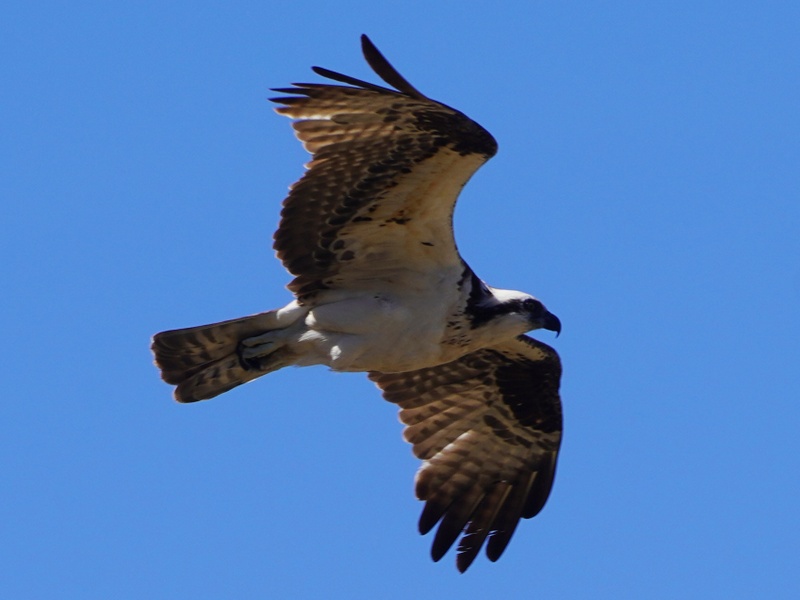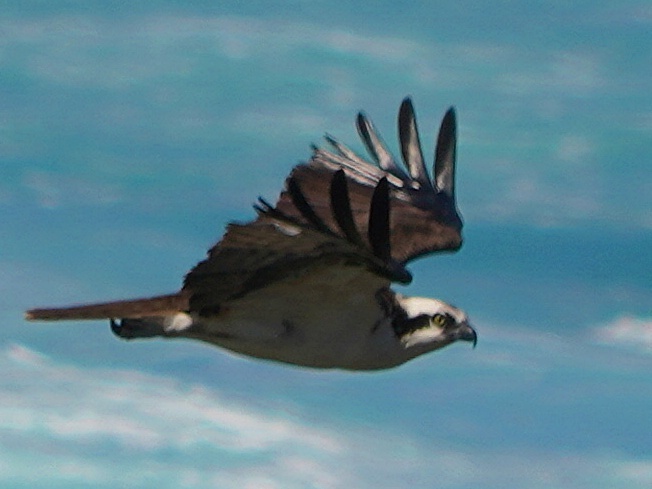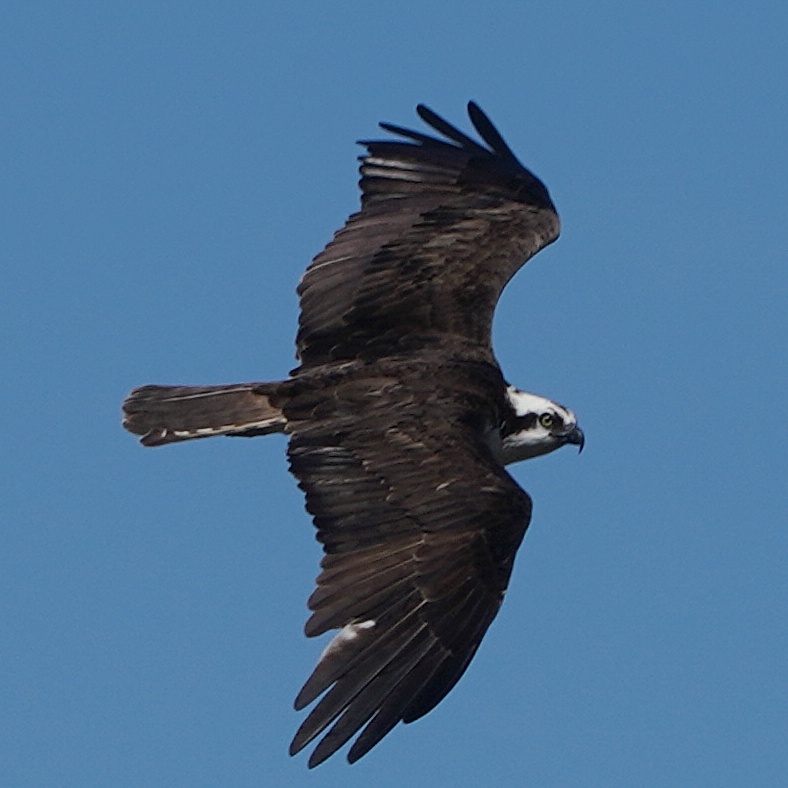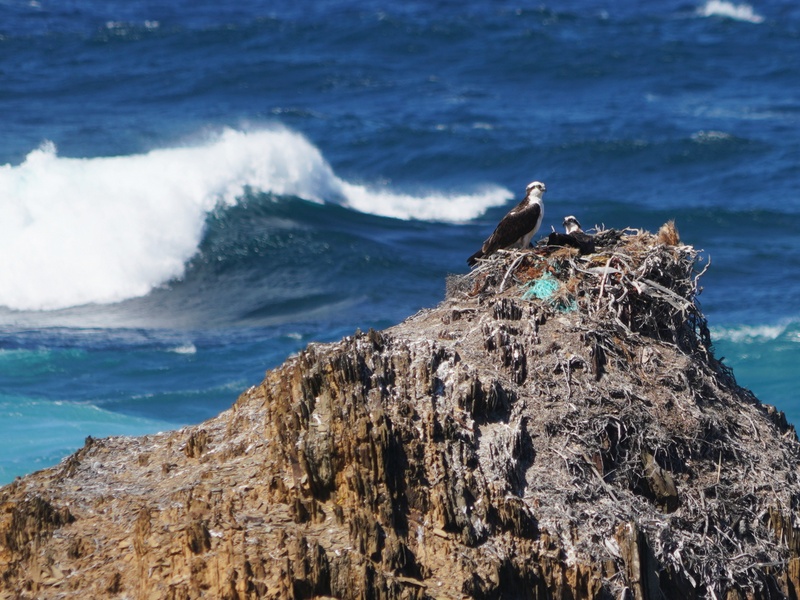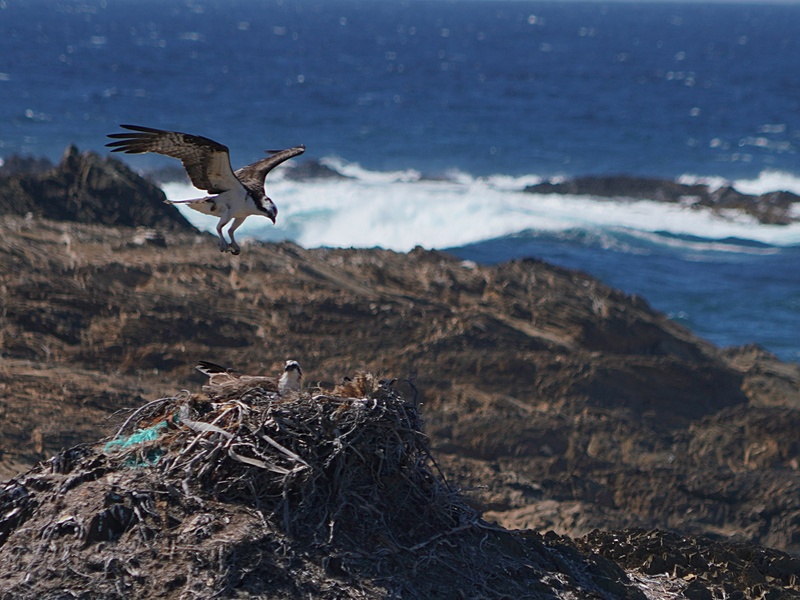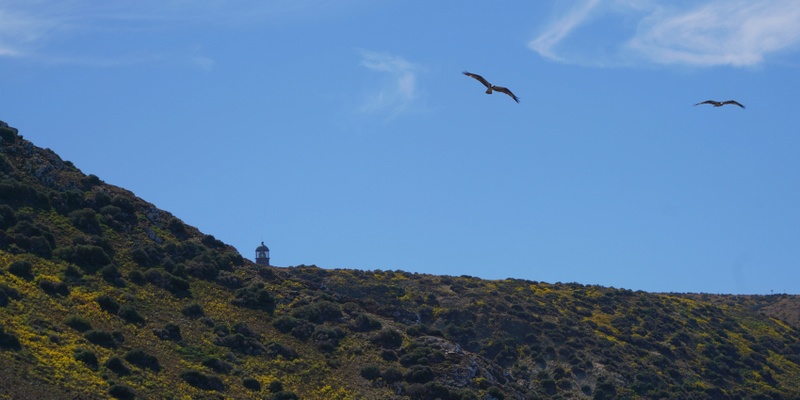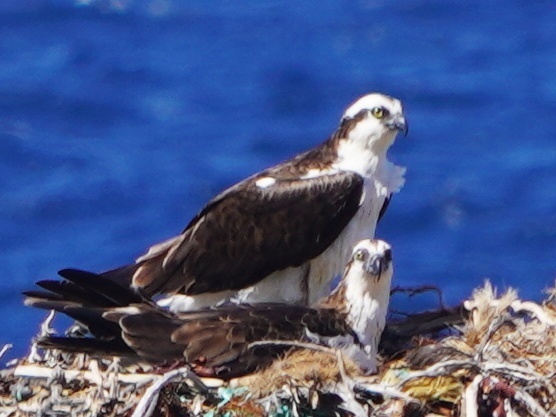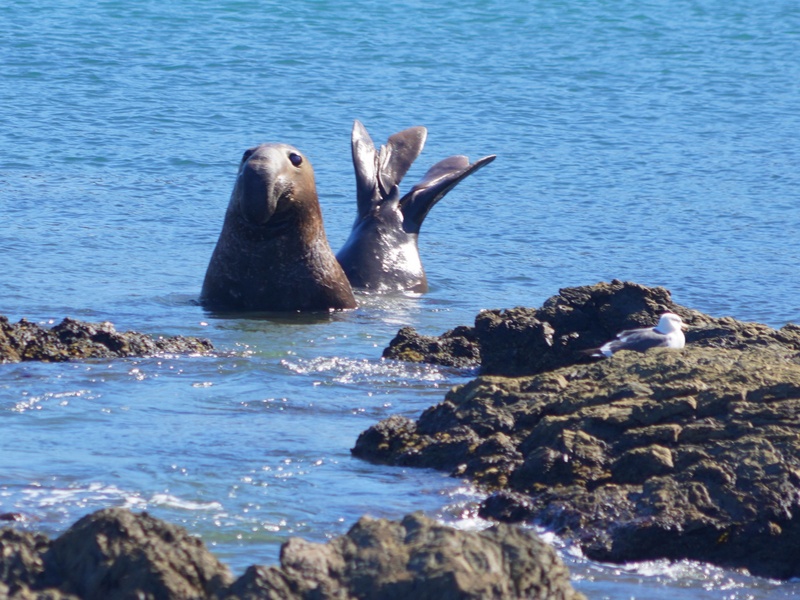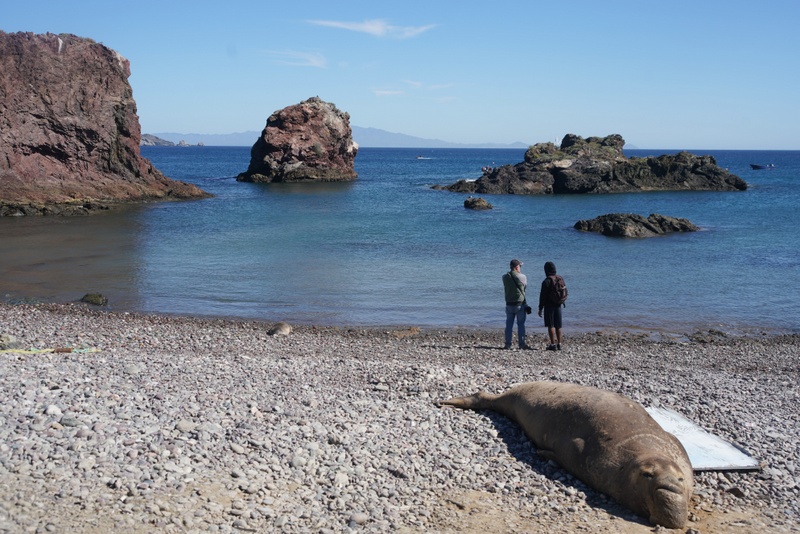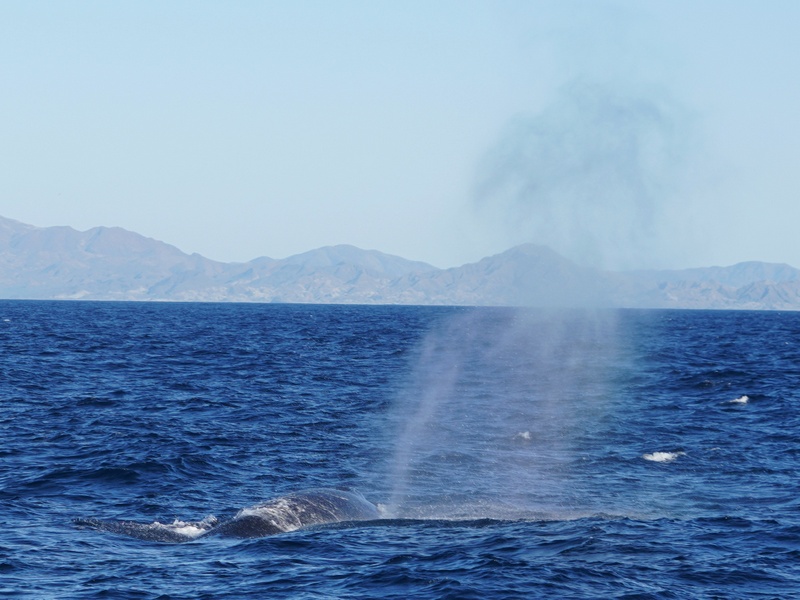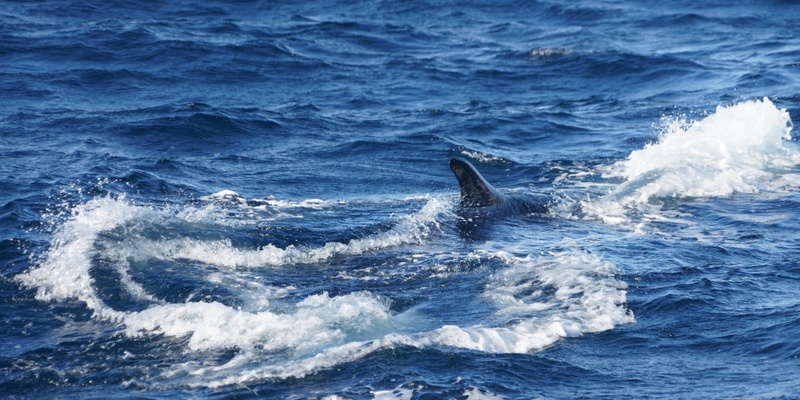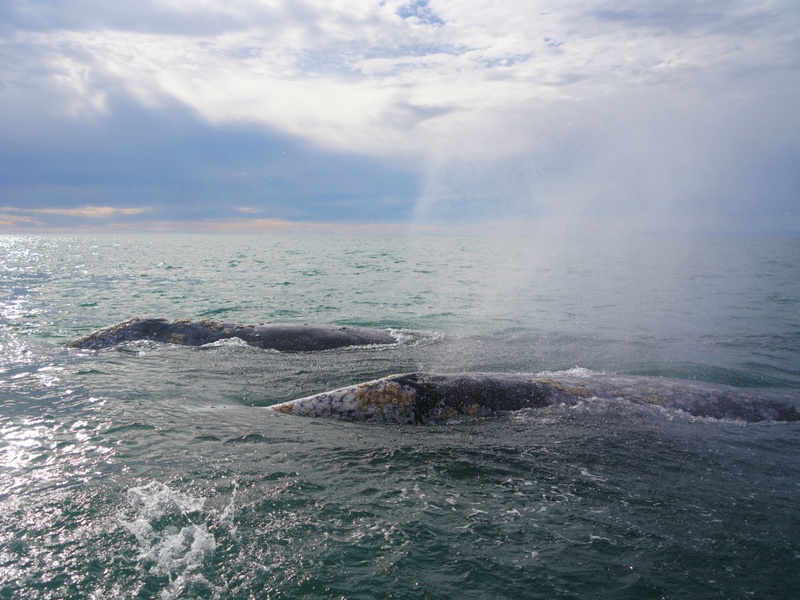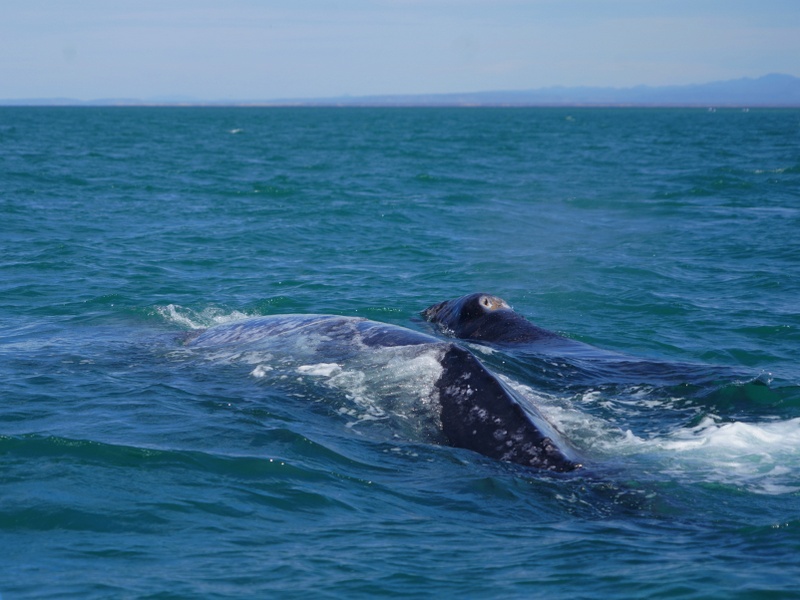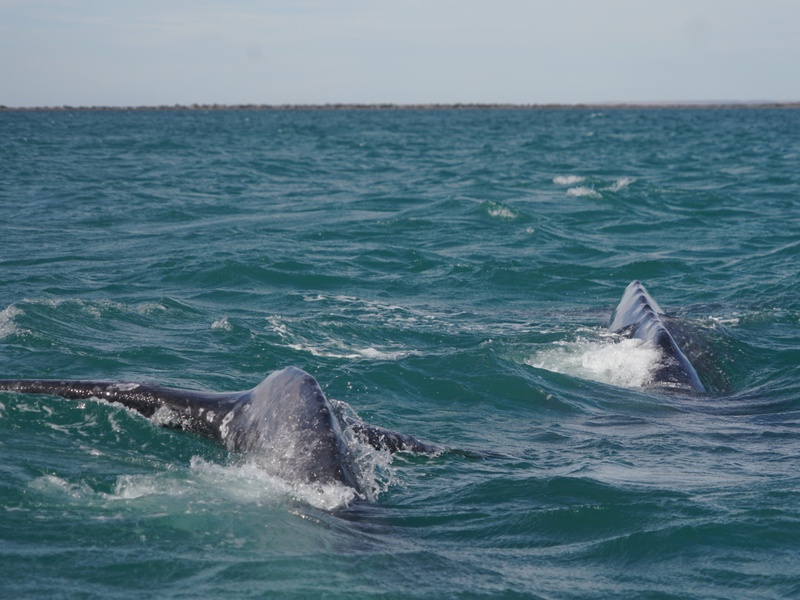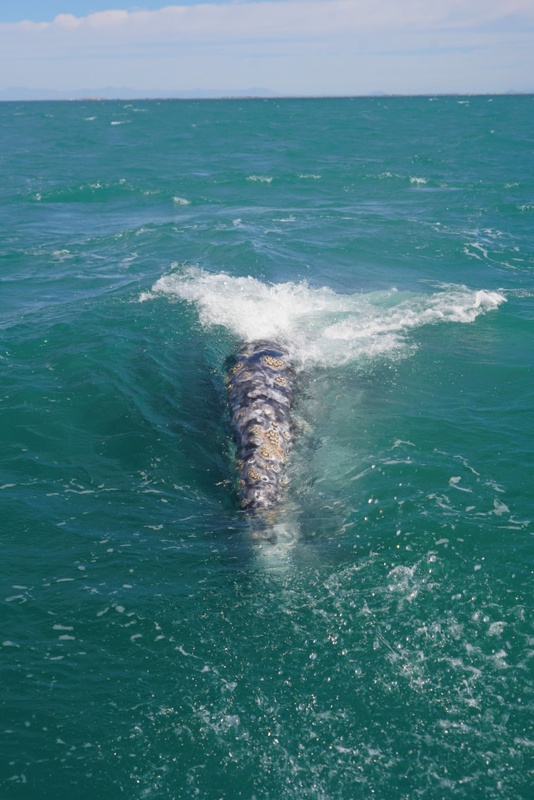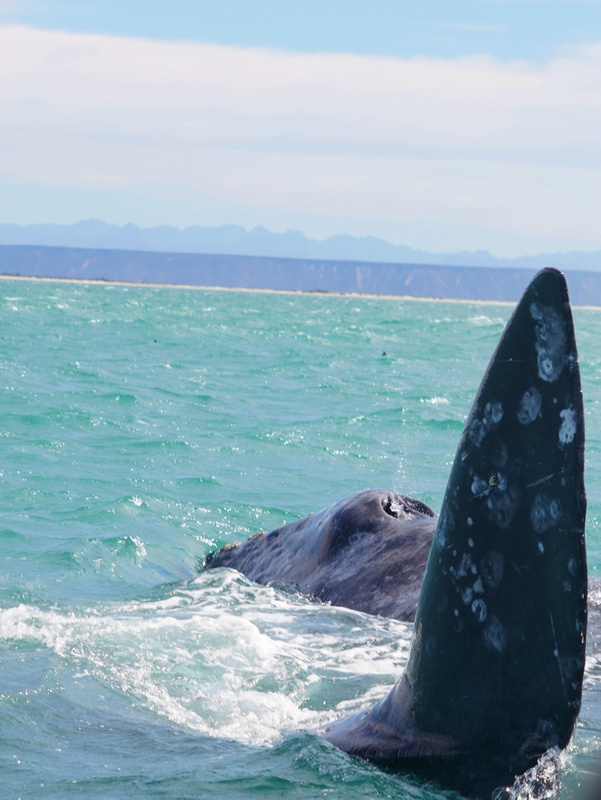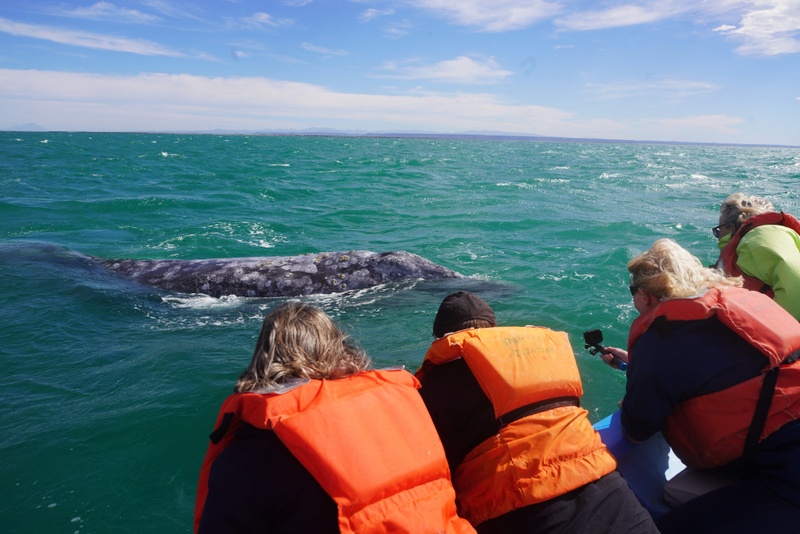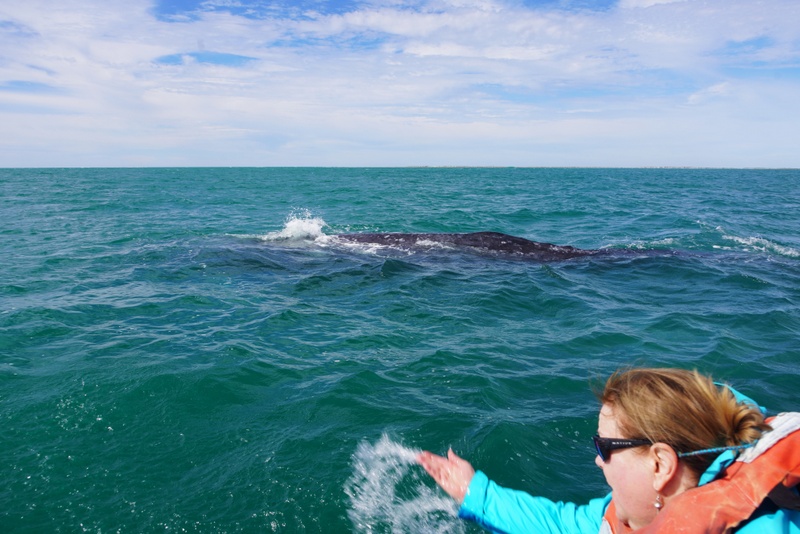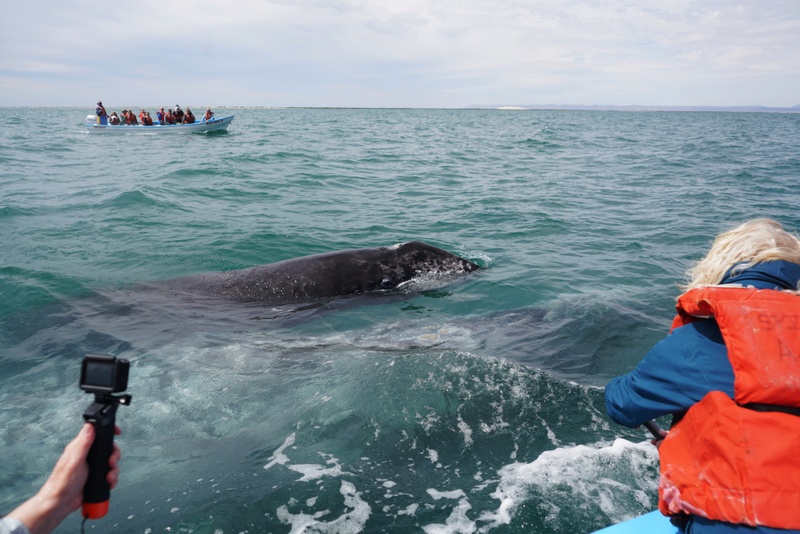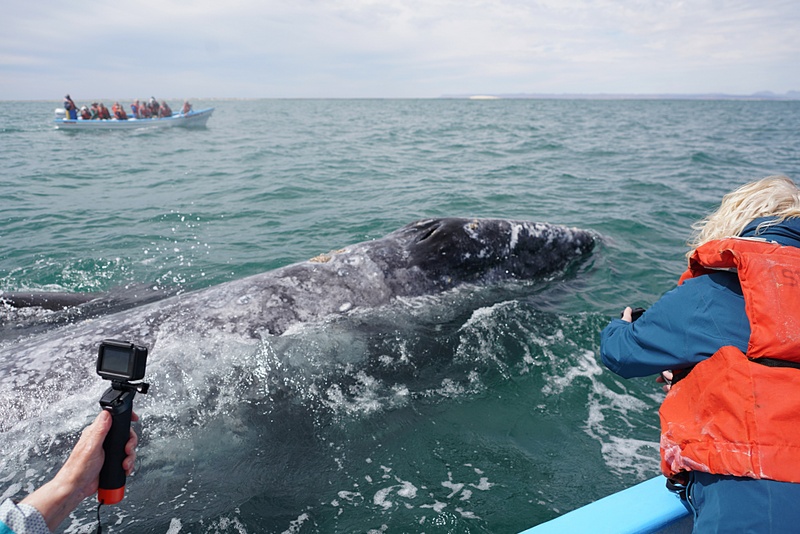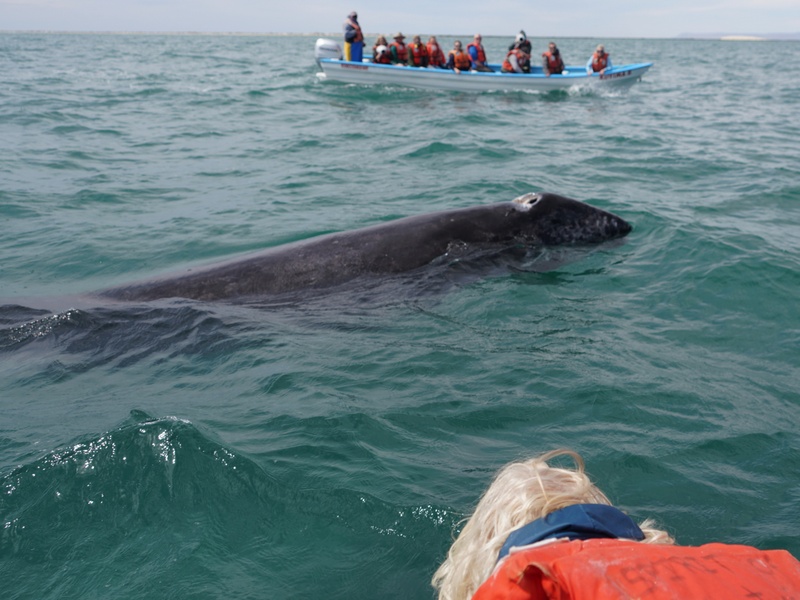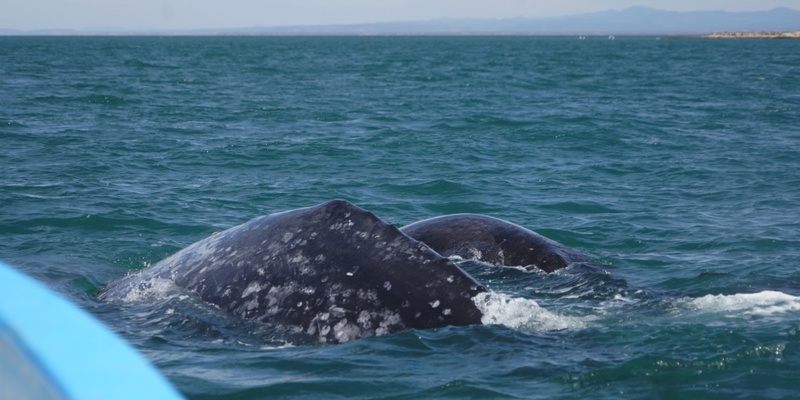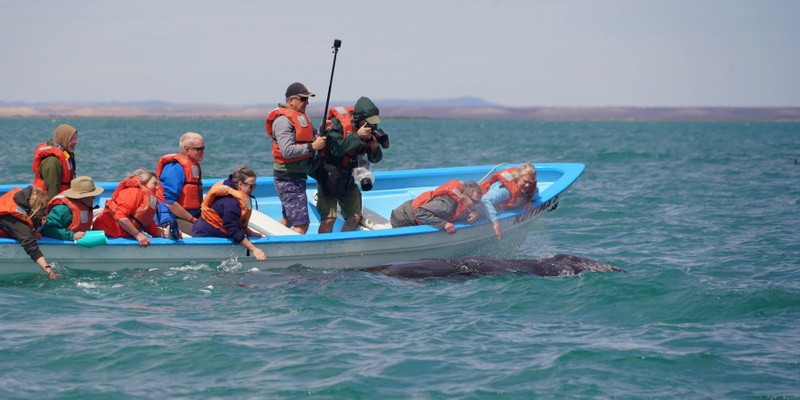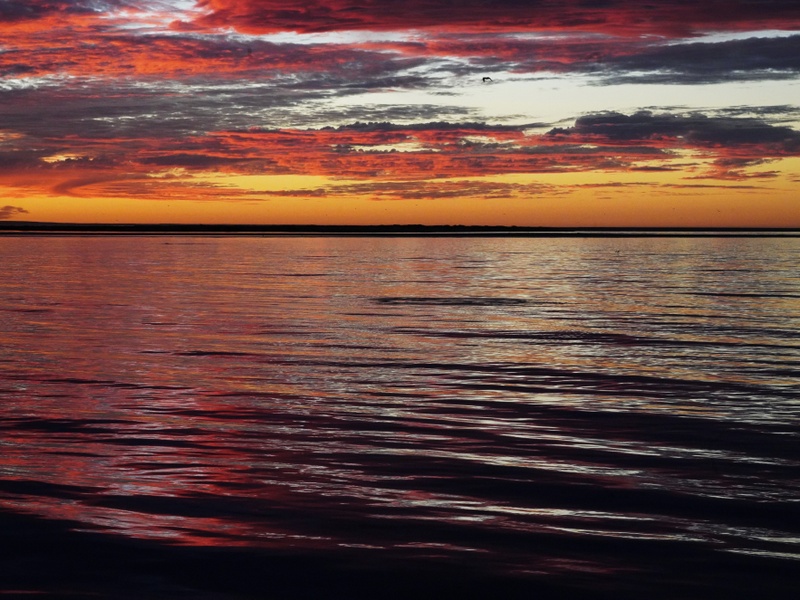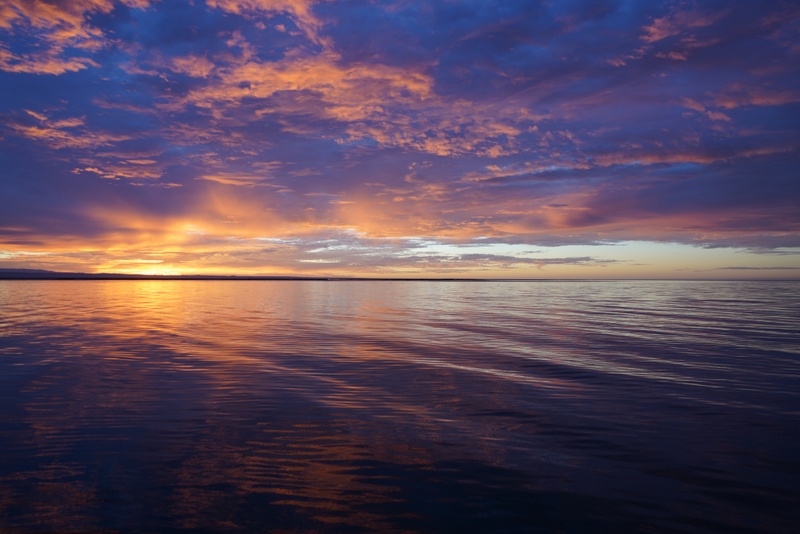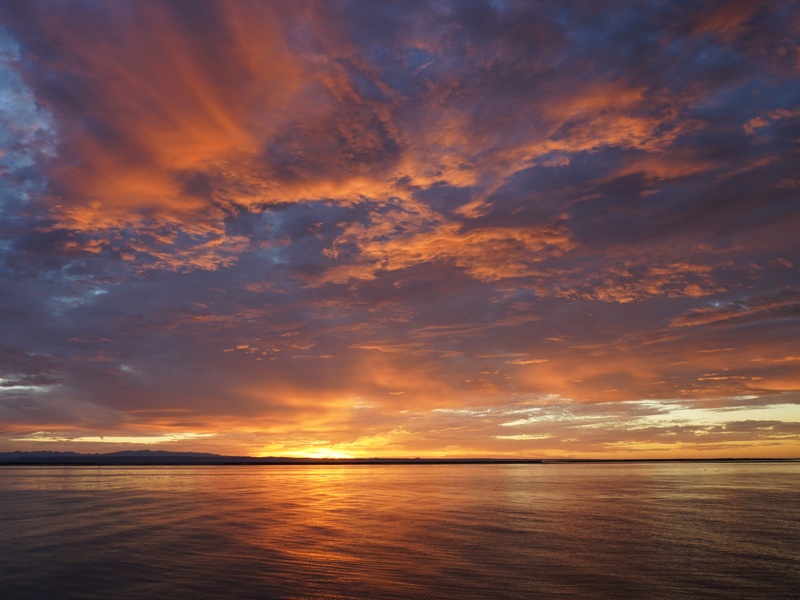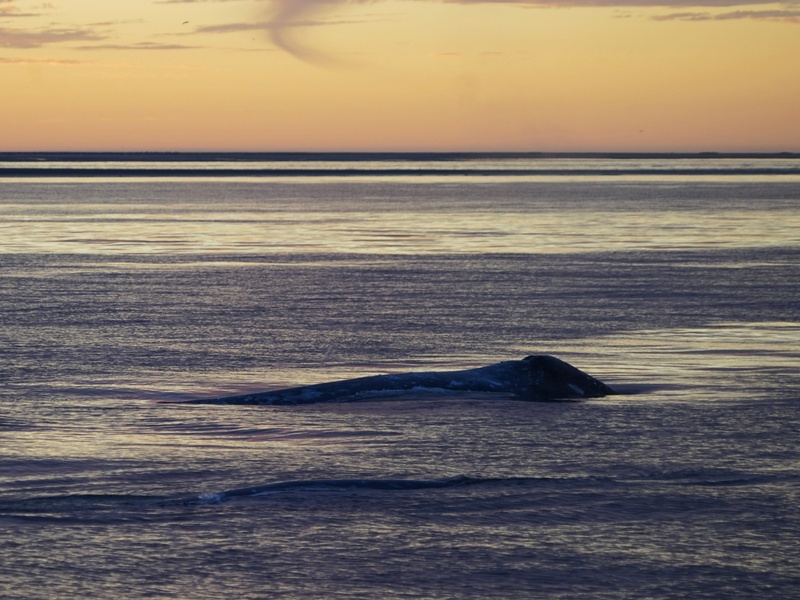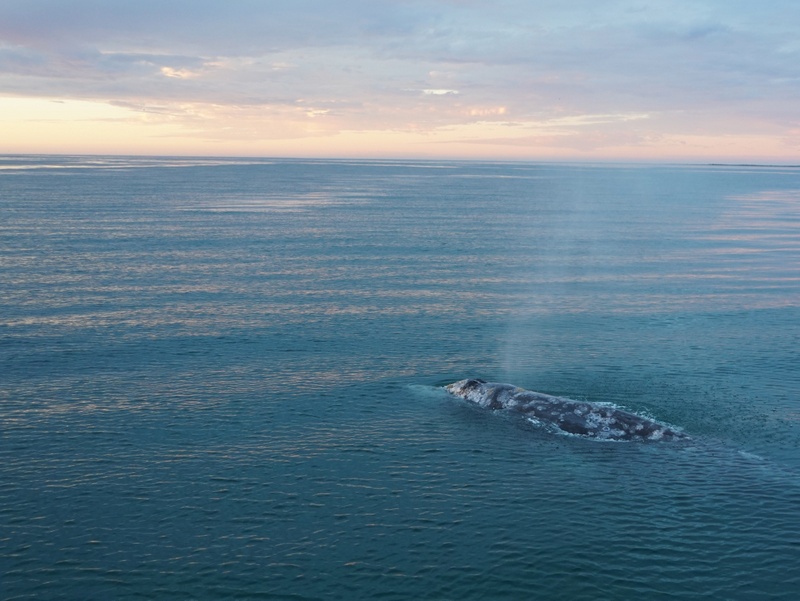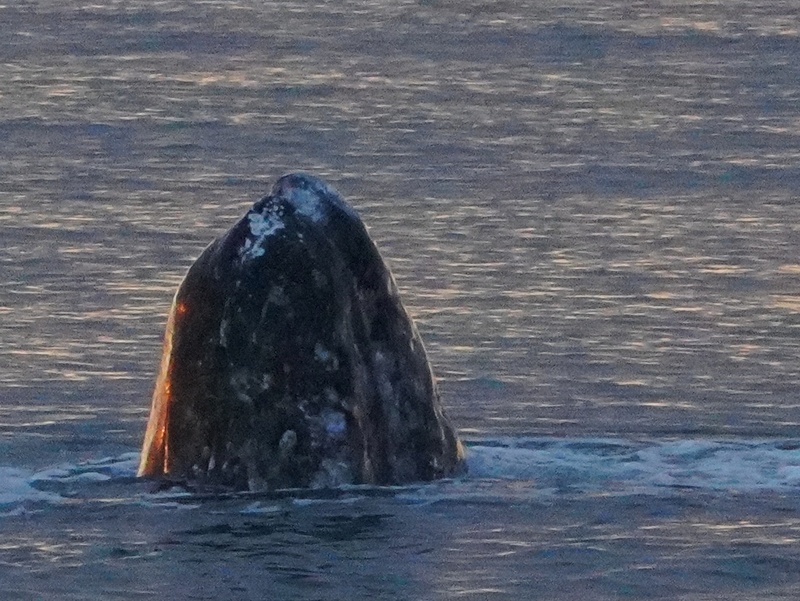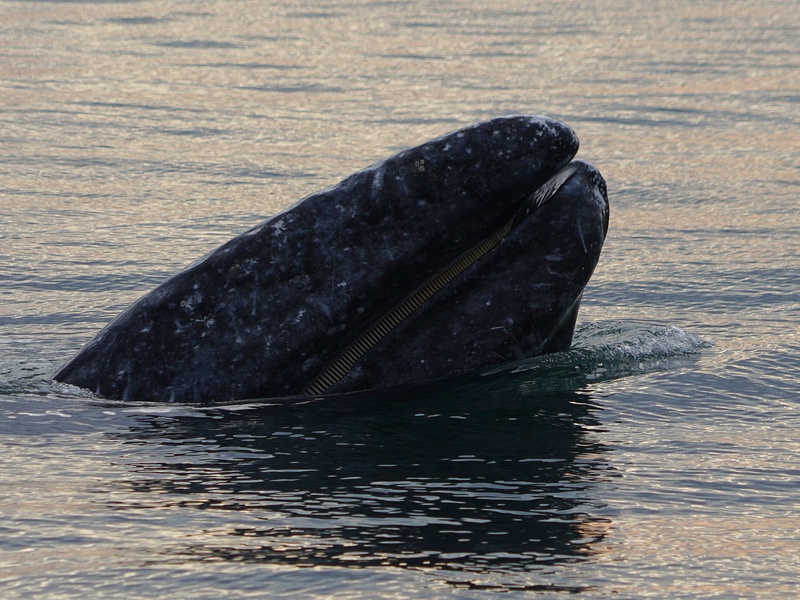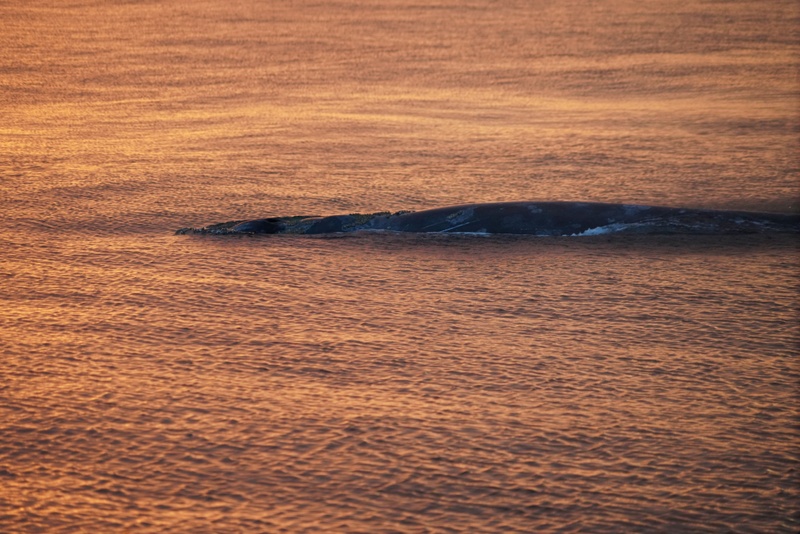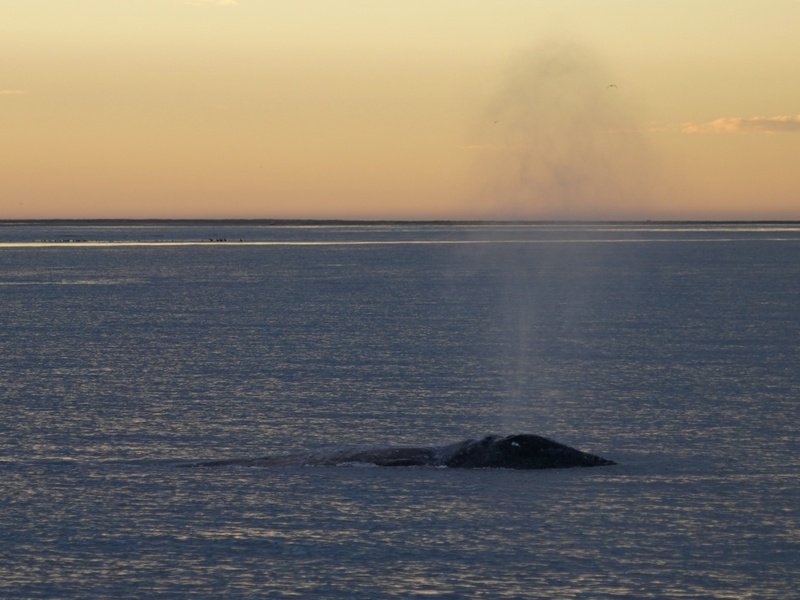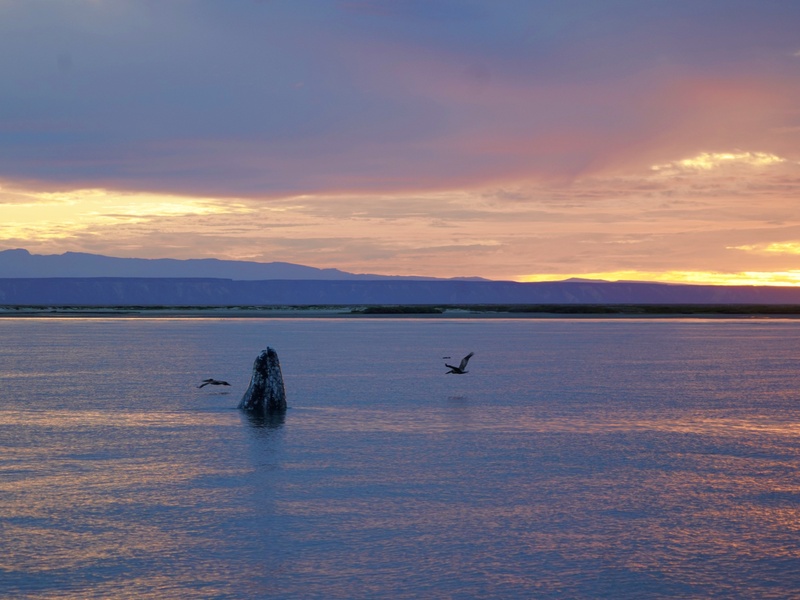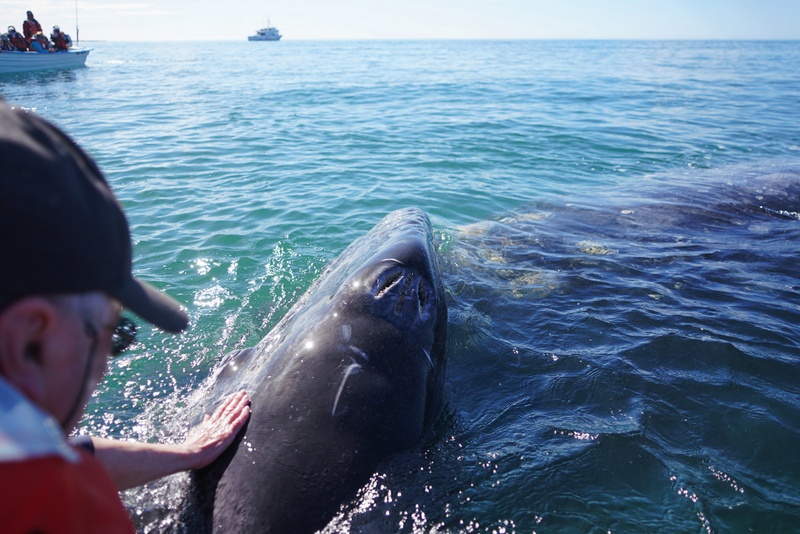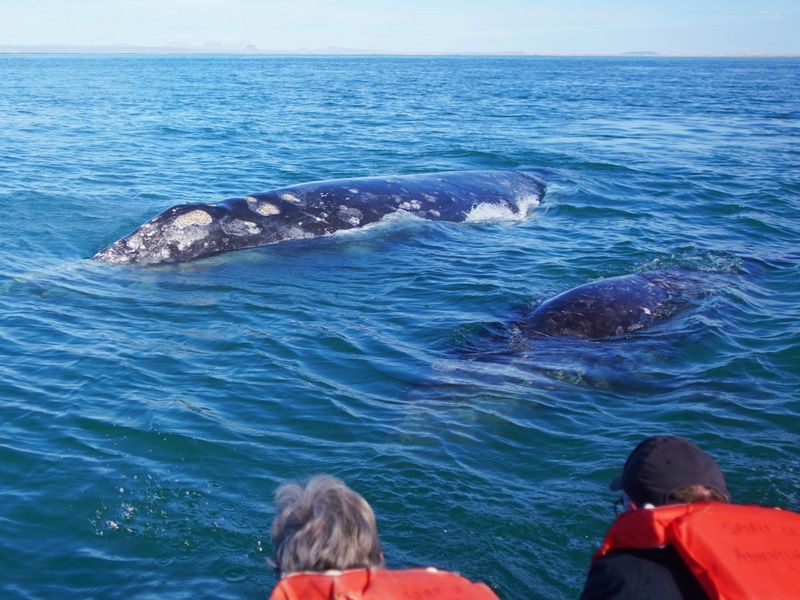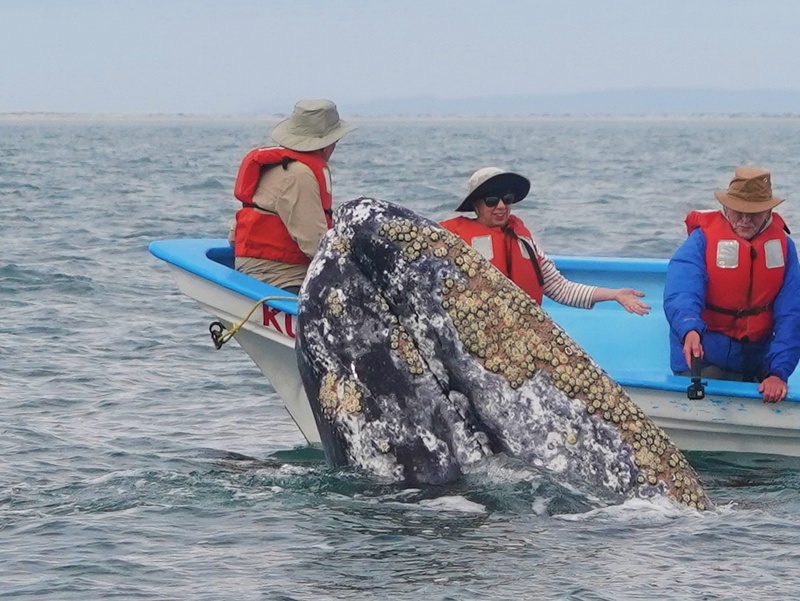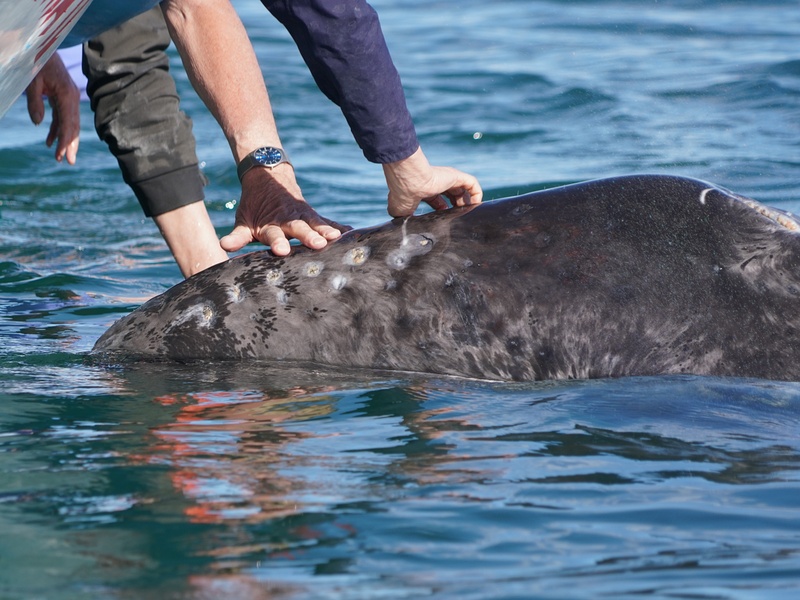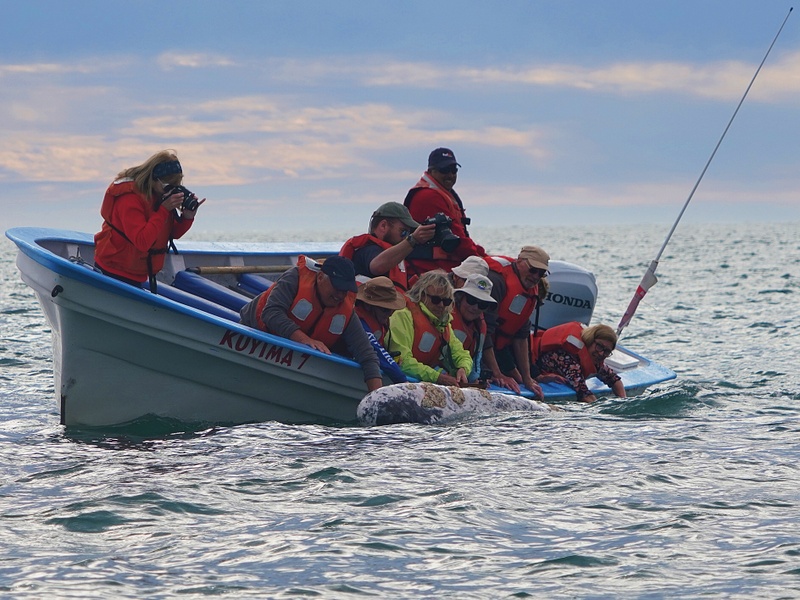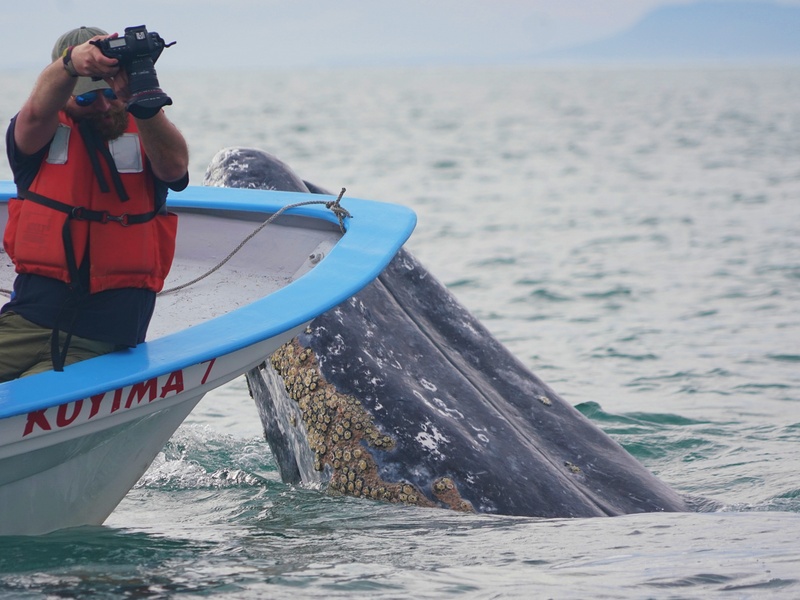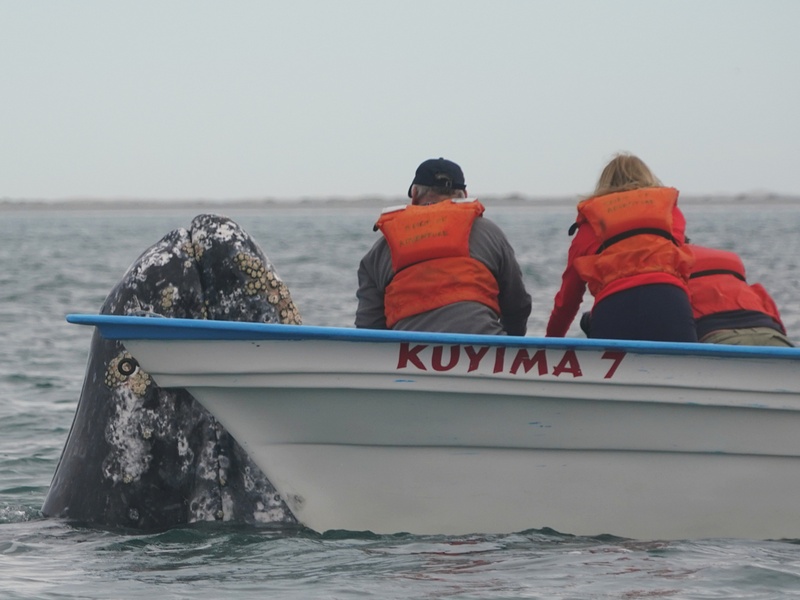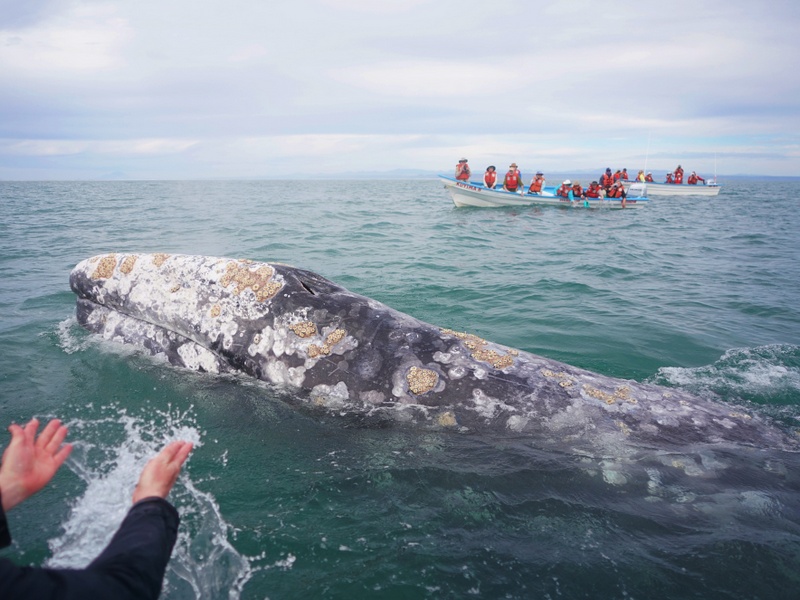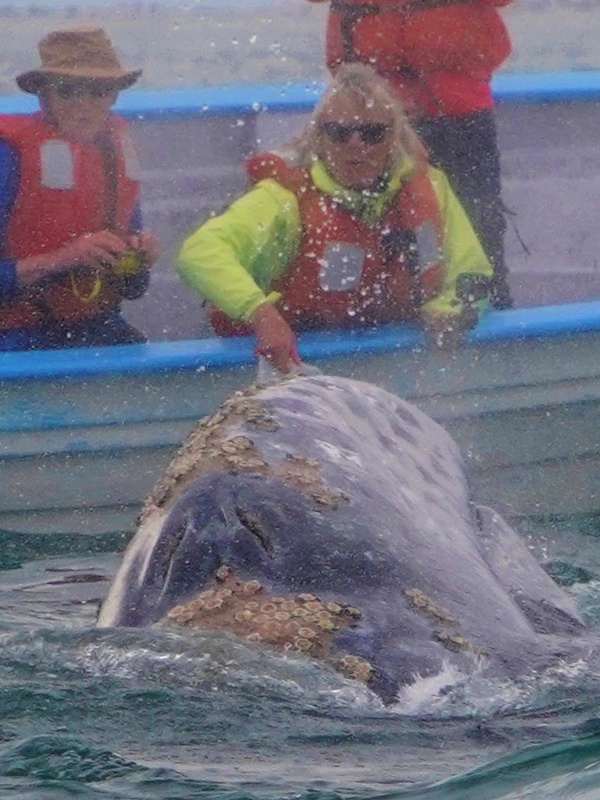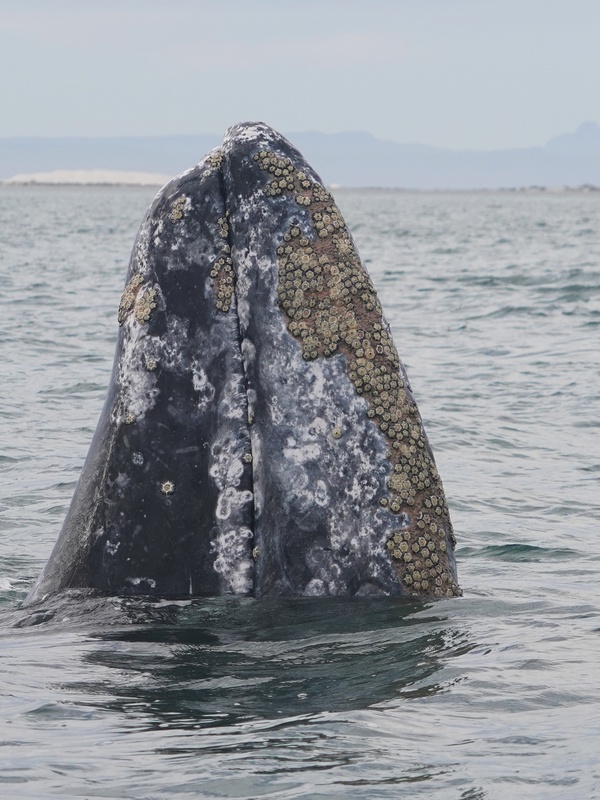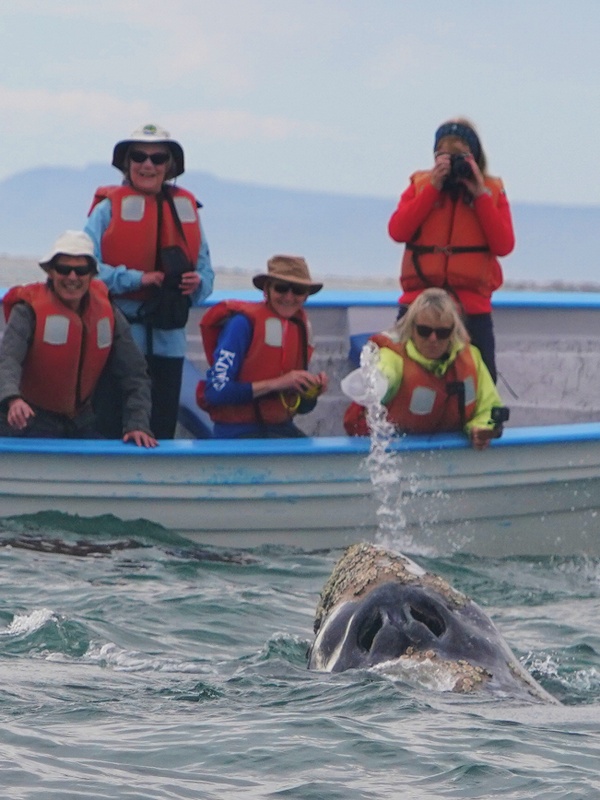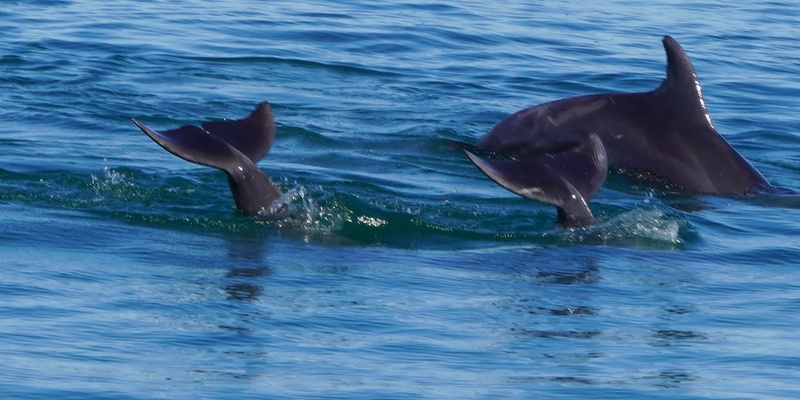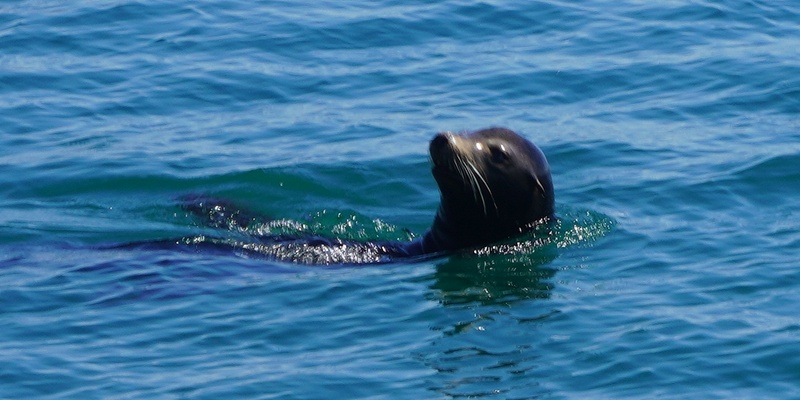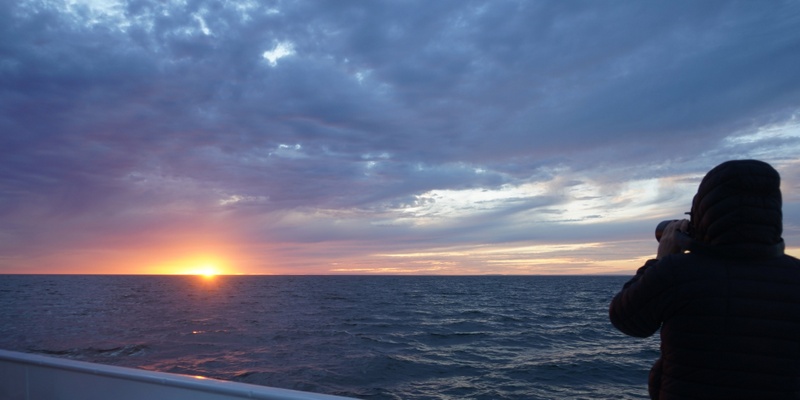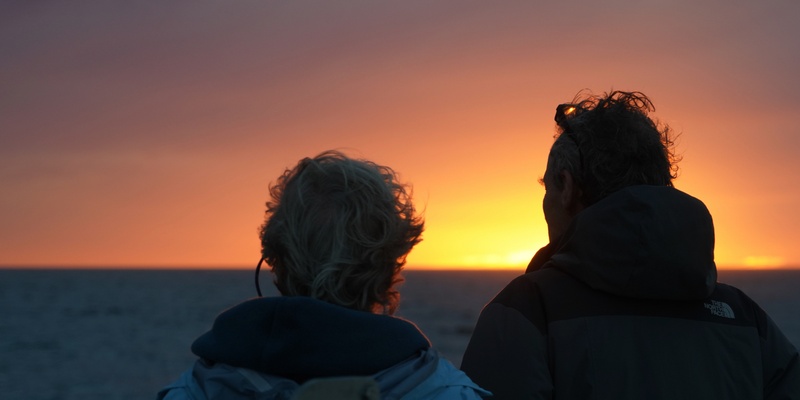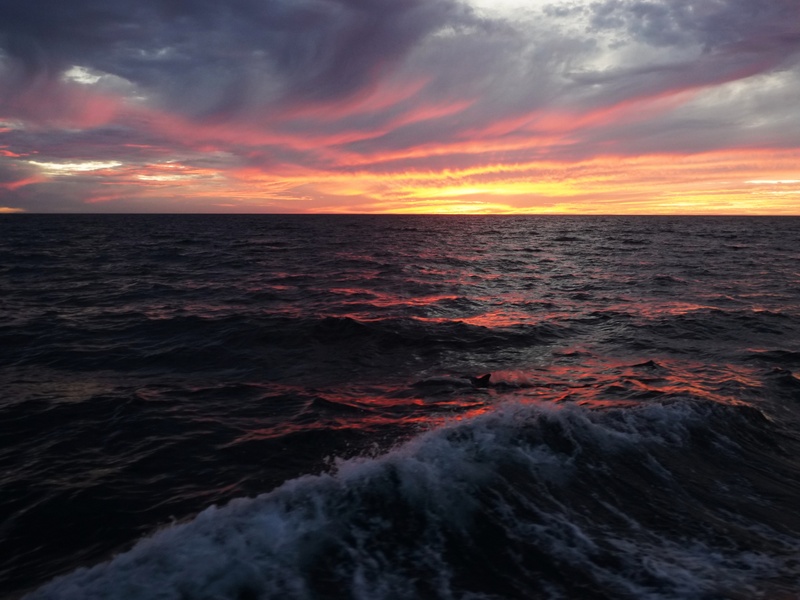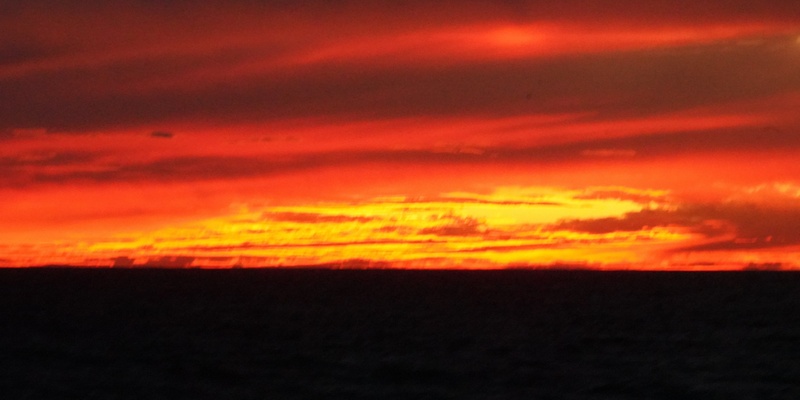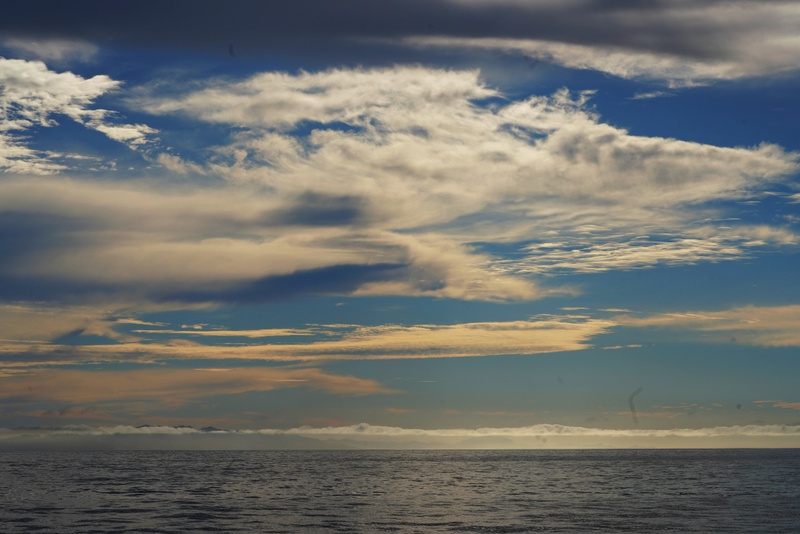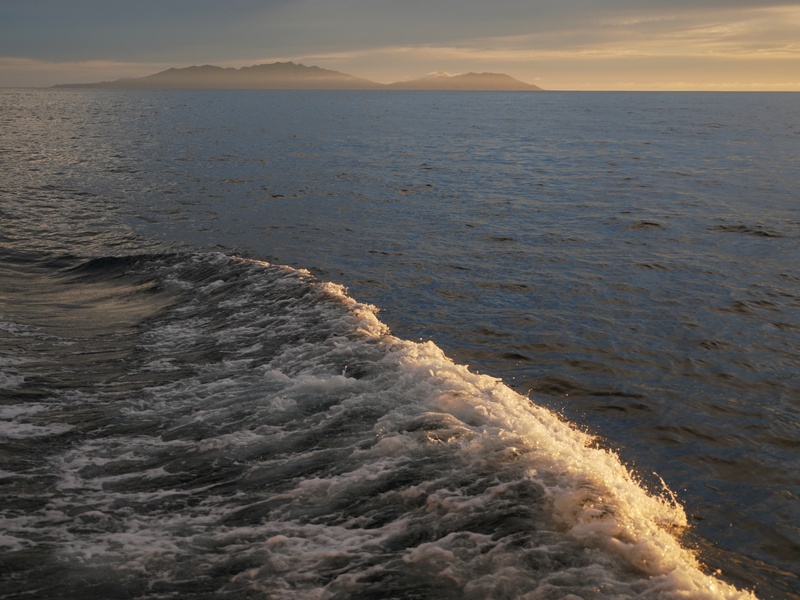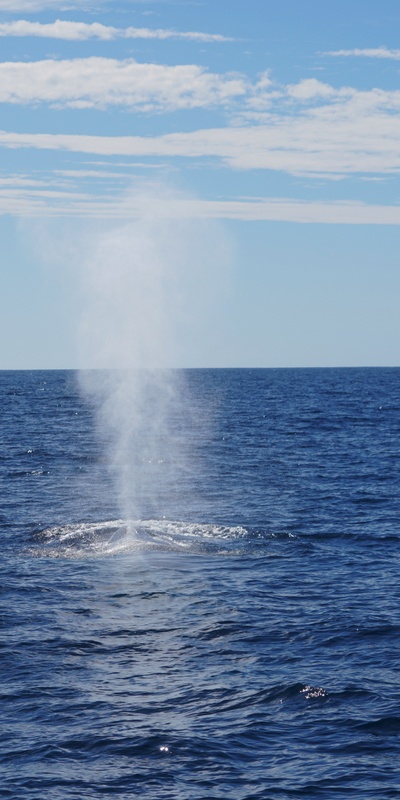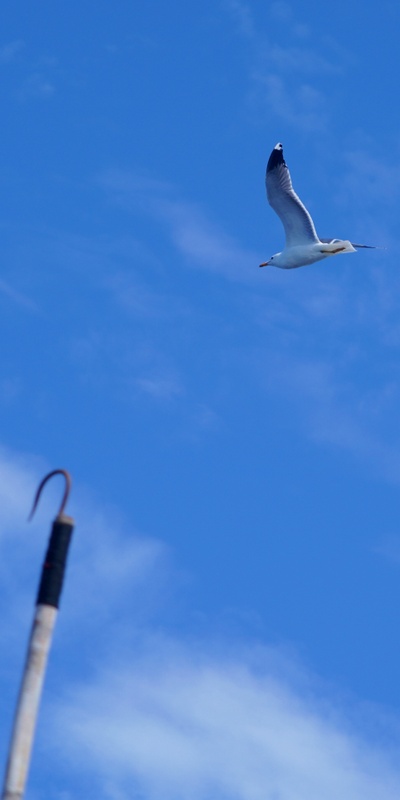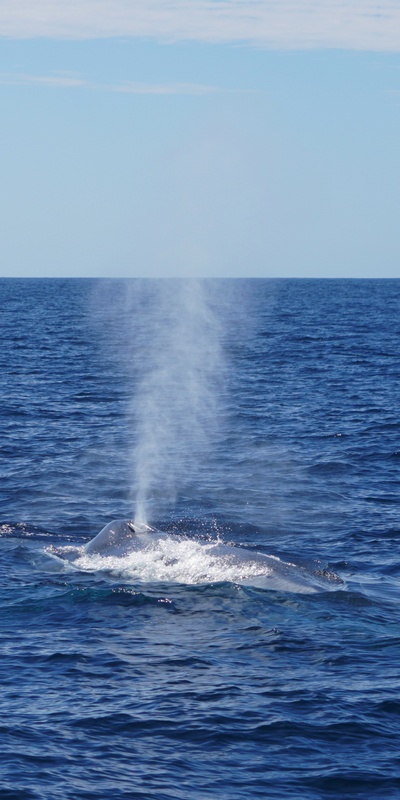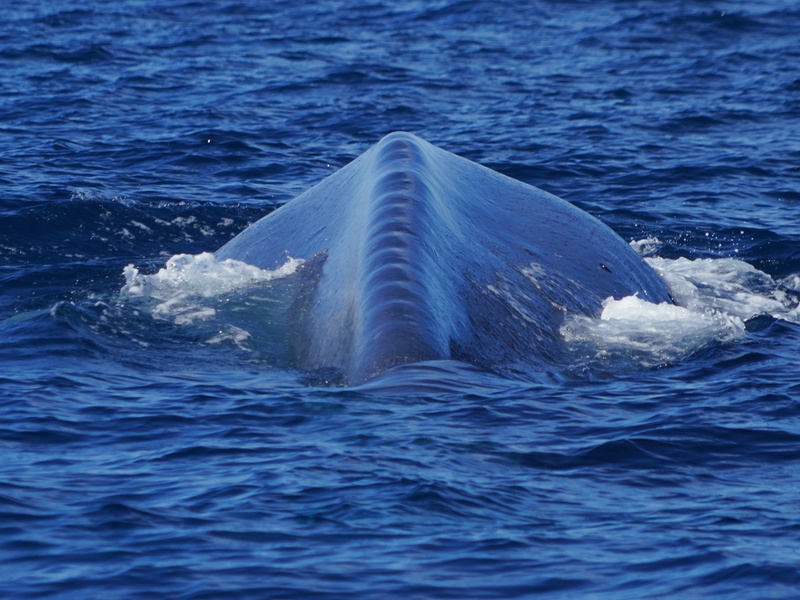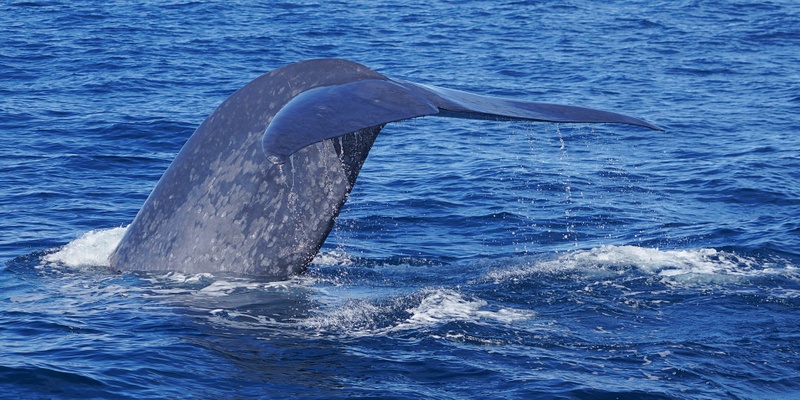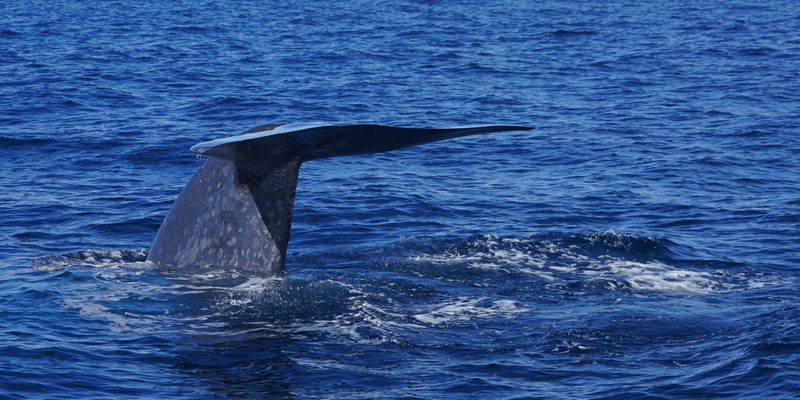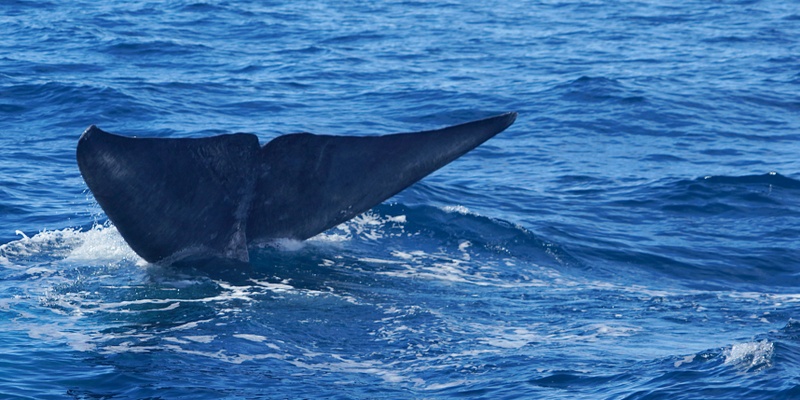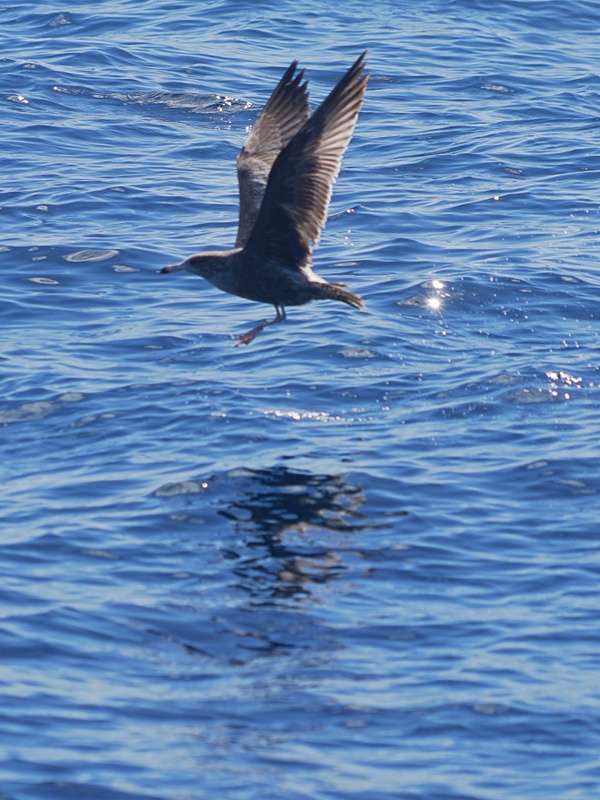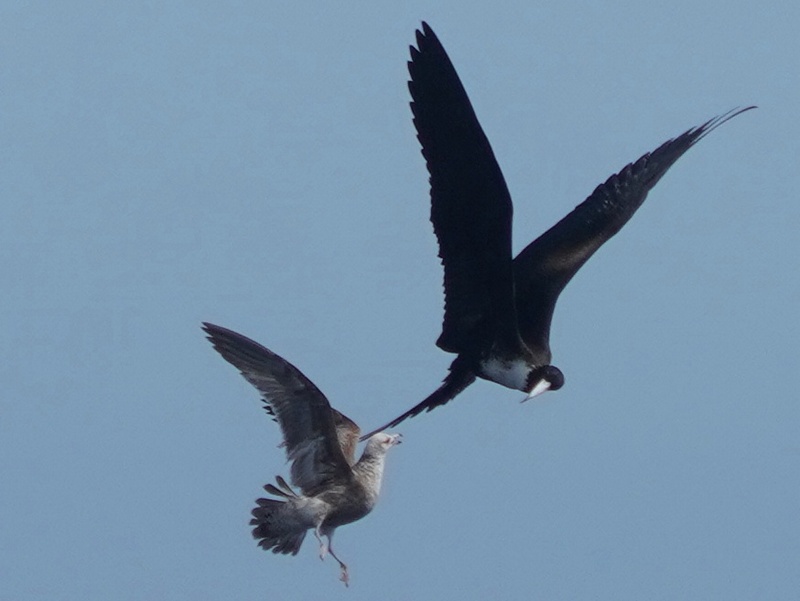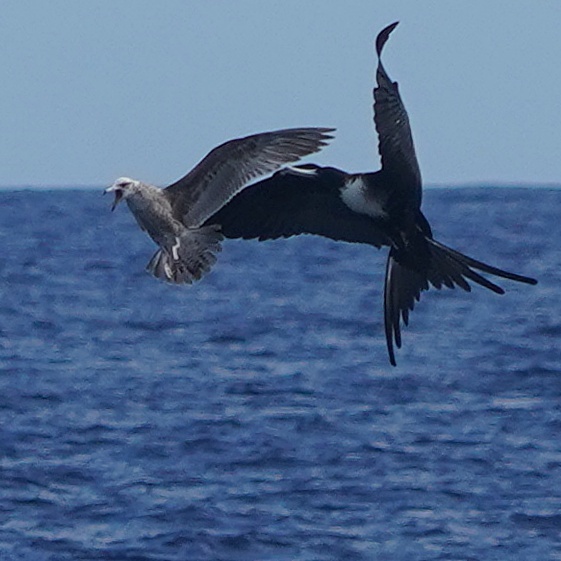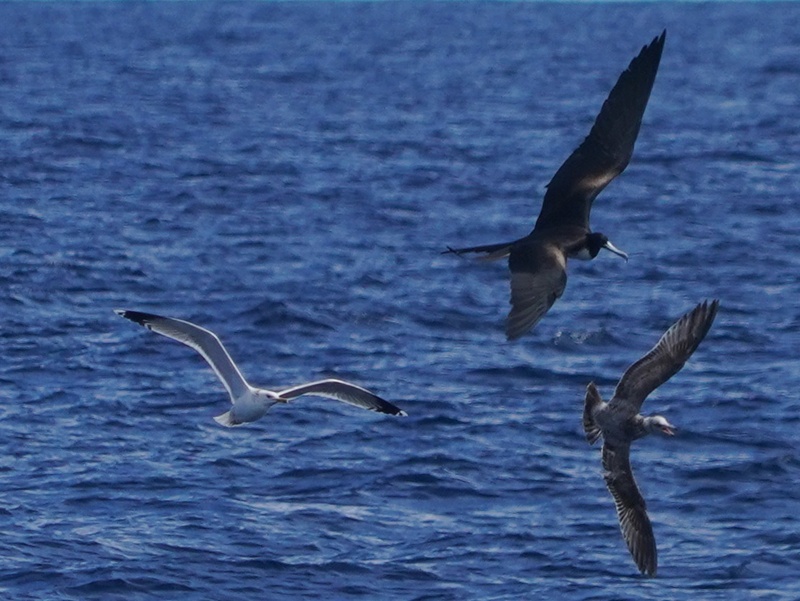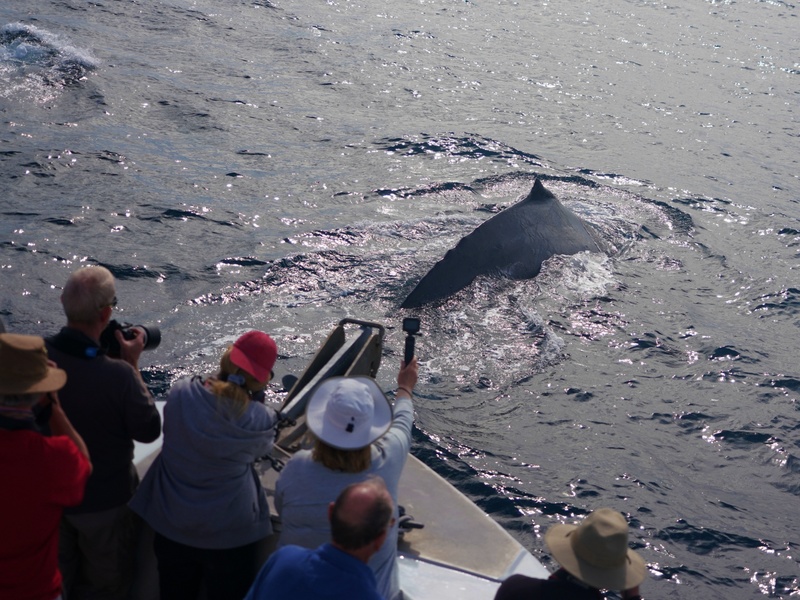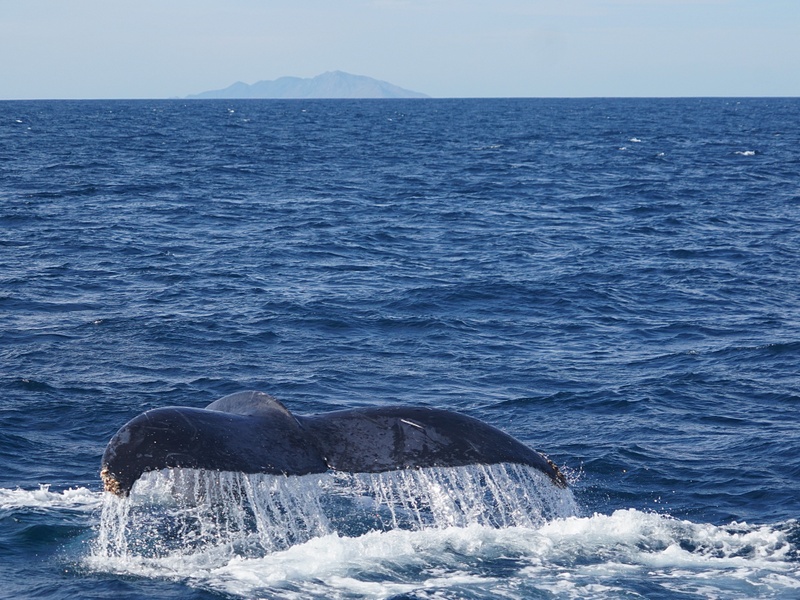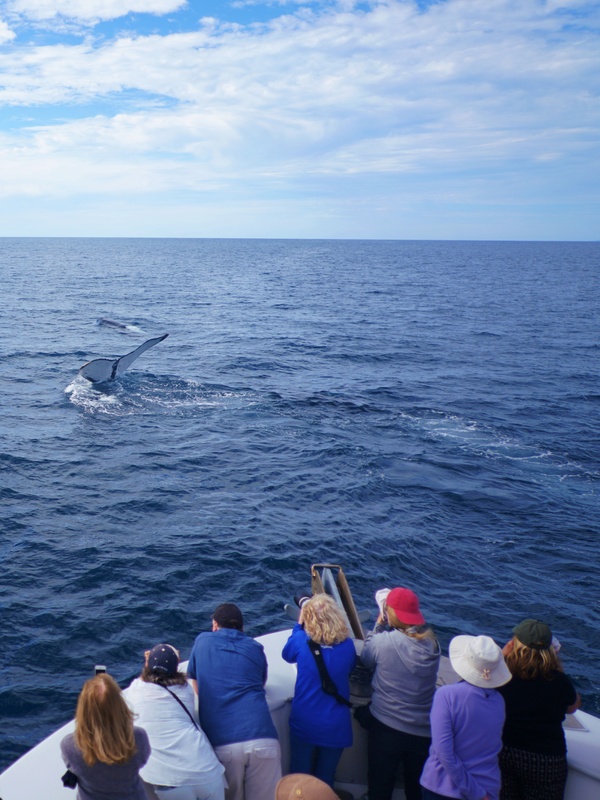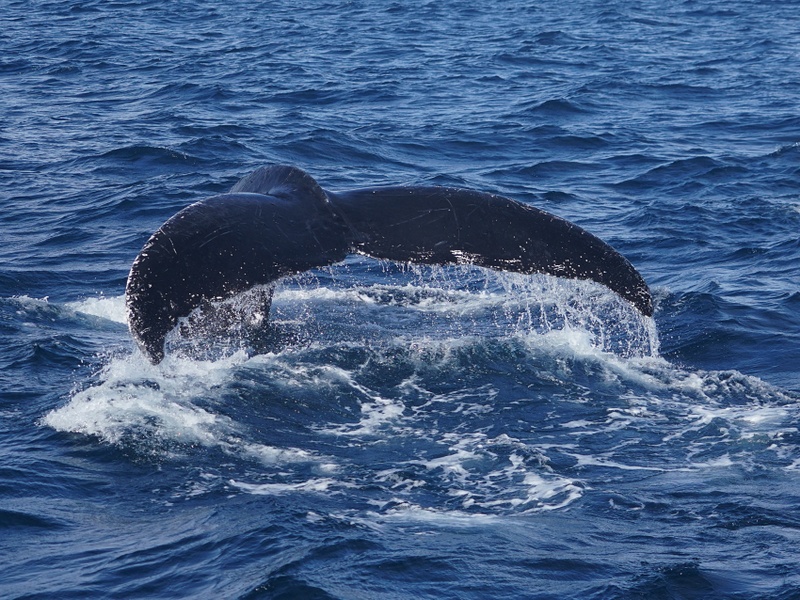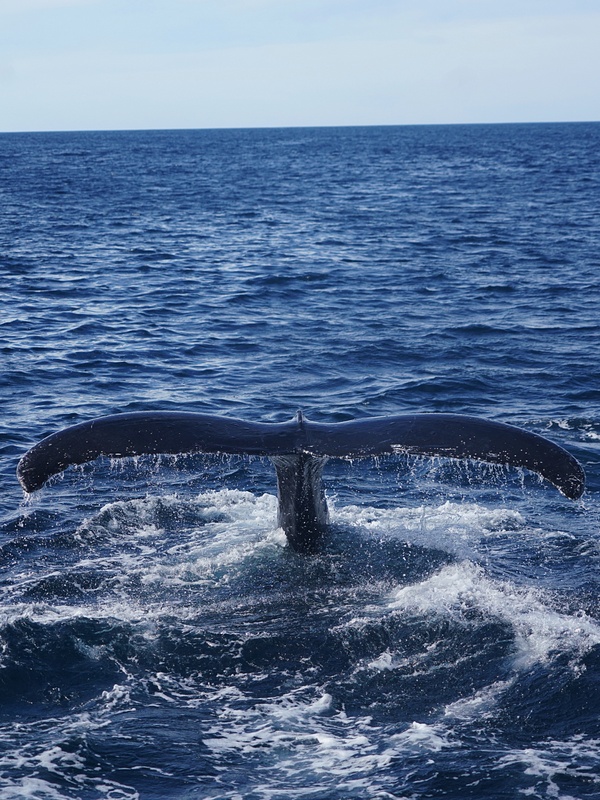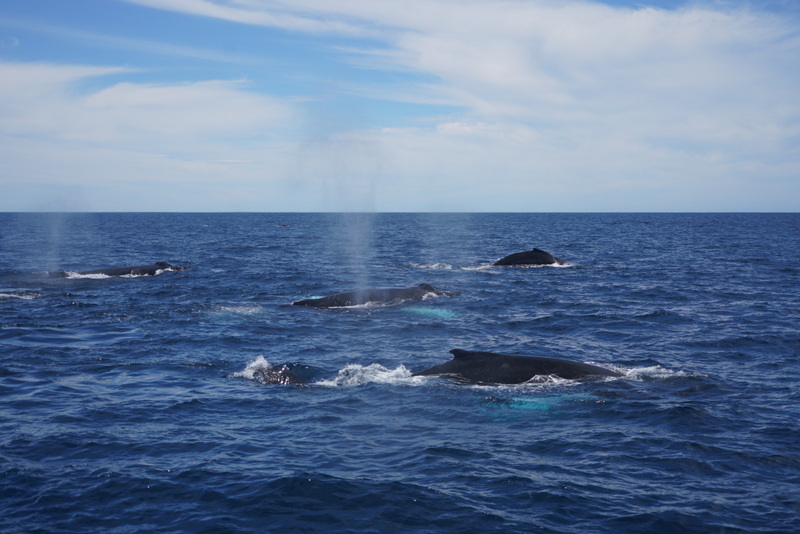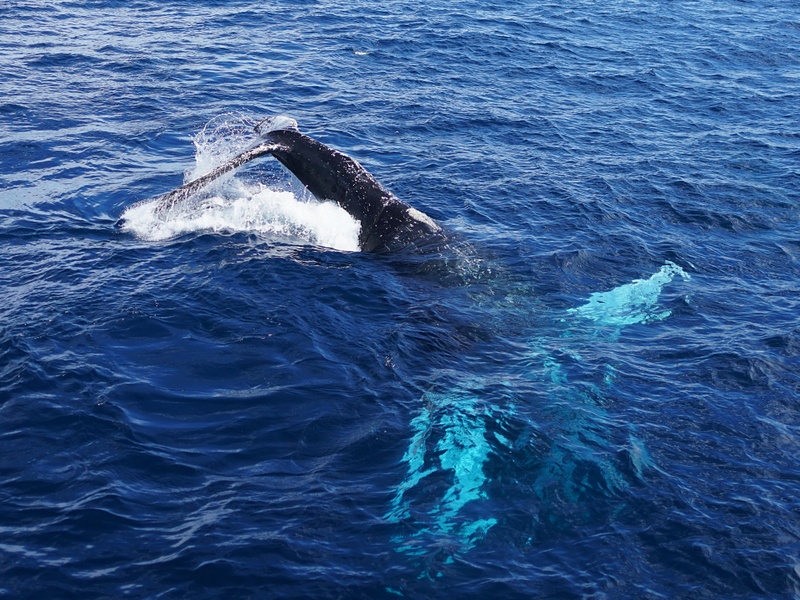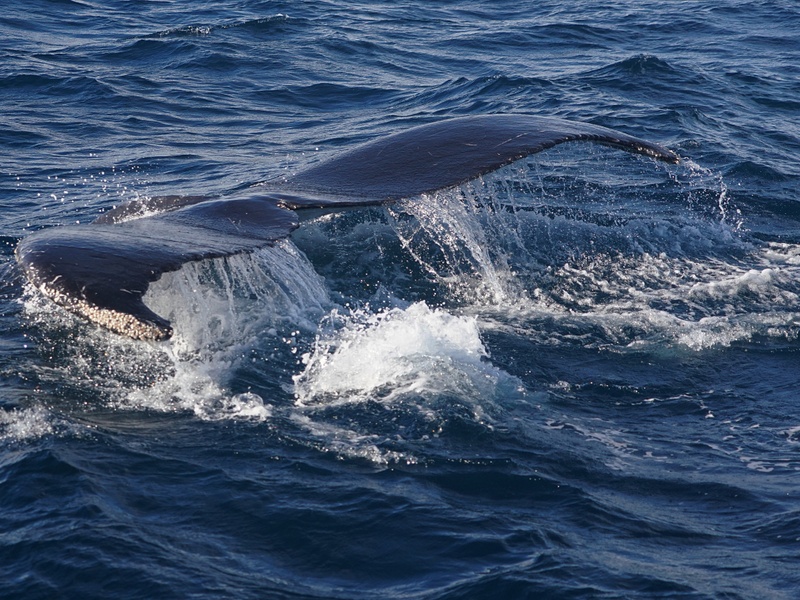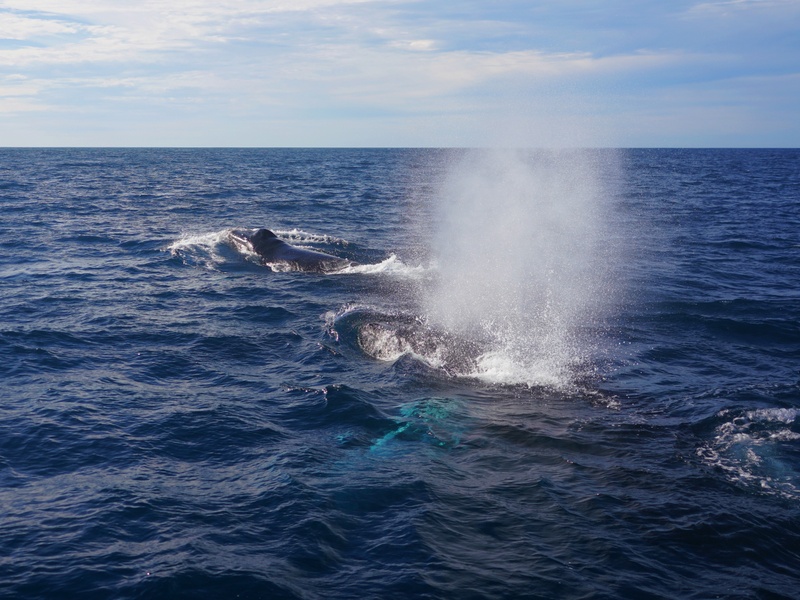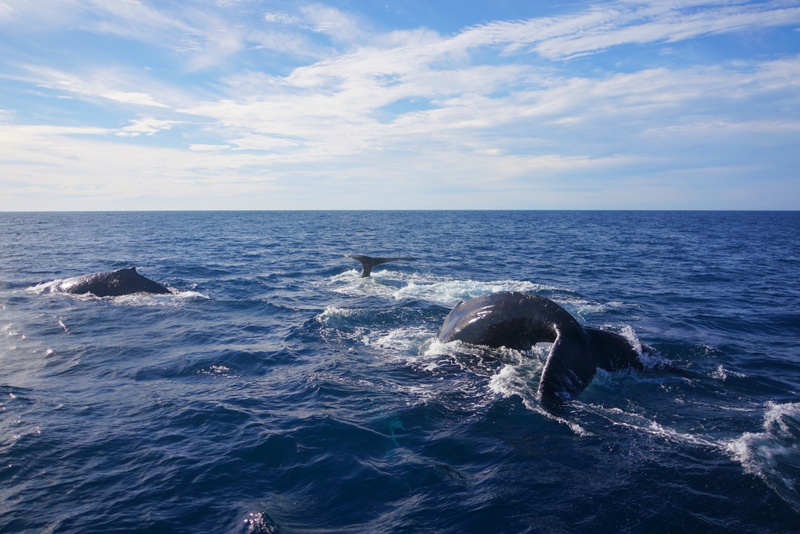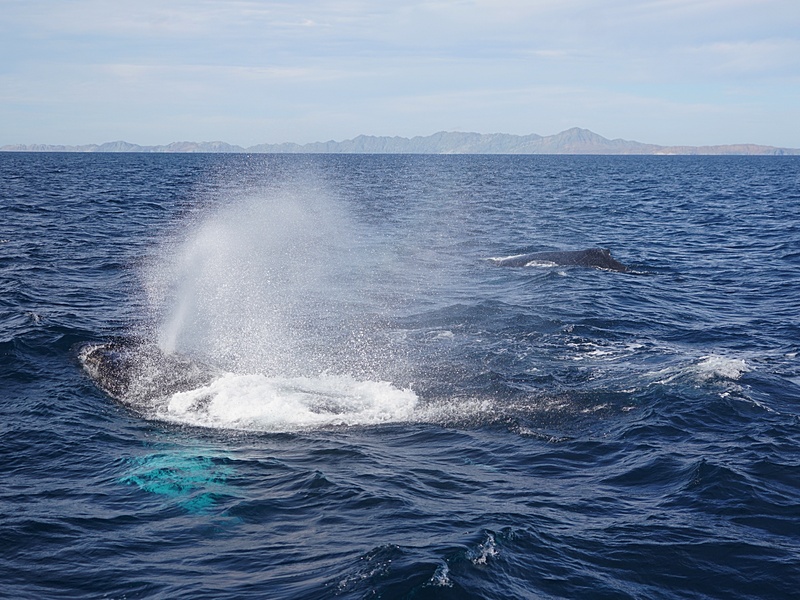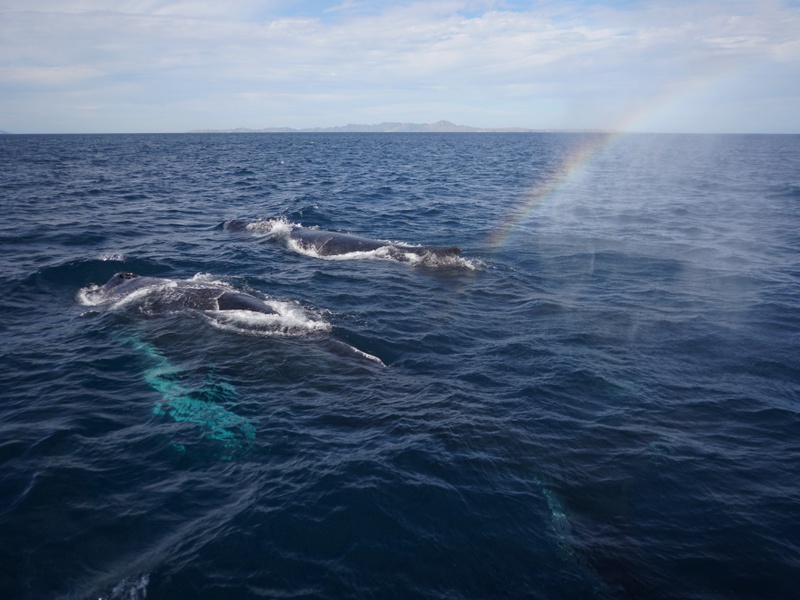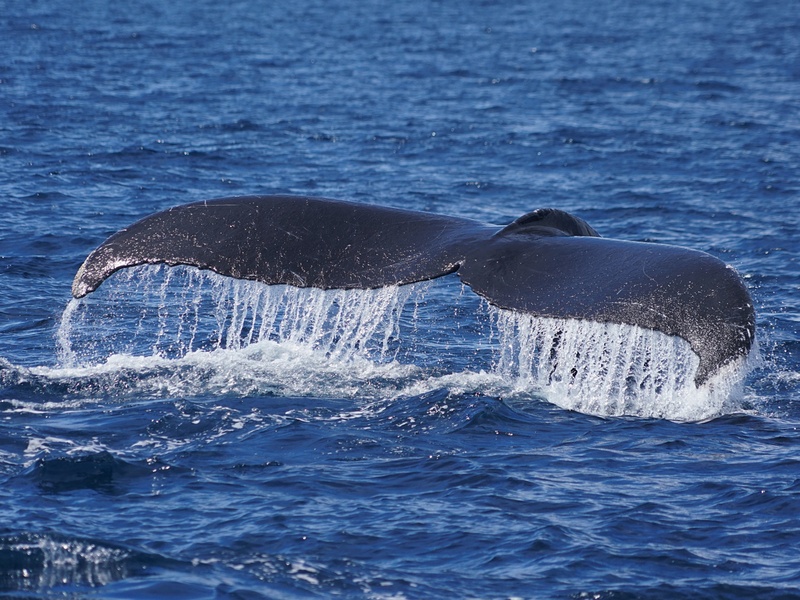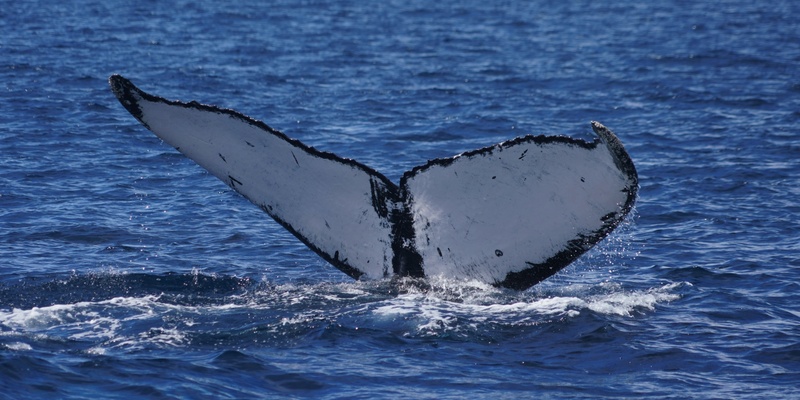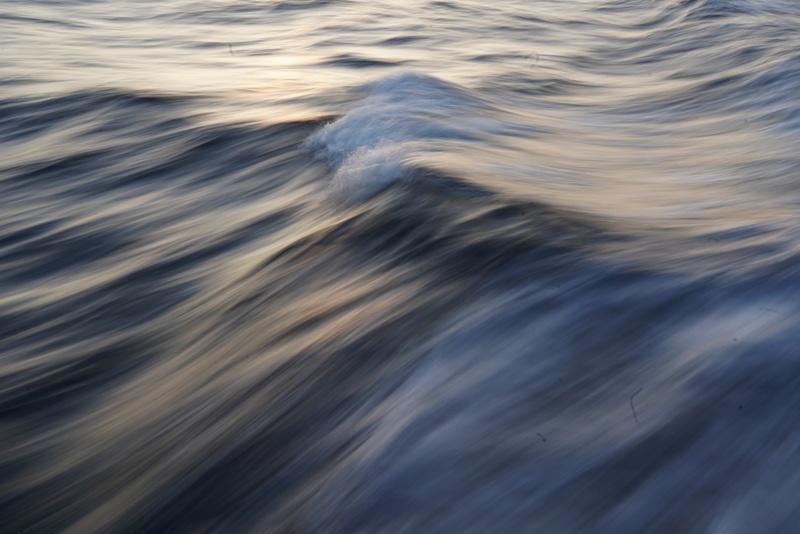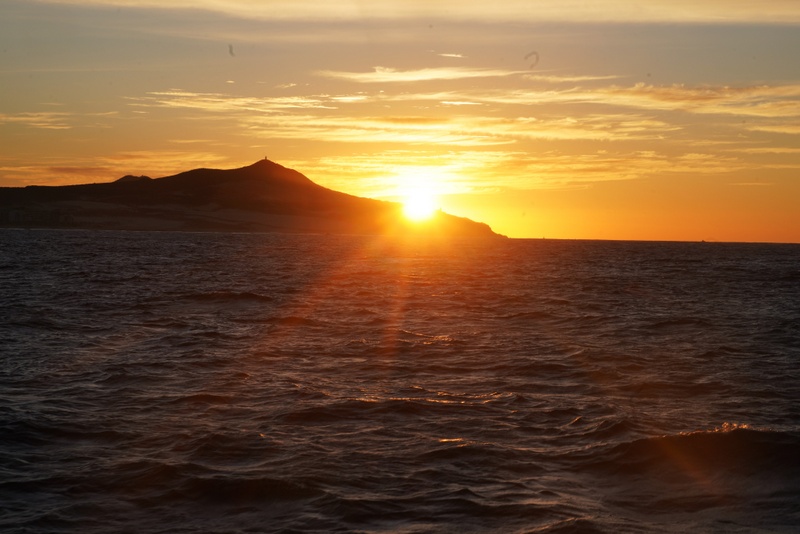Whale Watching Sailing from San Diego to Los Cabos, Baja California February 23 – 29
February 23 – March 6: Whale Watching Sailing from San Diego to Los Cabos, Baja California
Day 1 February 23: A Rest Day in San Diego
The tour would begin today and the group would spend a night at the Bay Club Hotel in Shelter Island before boarding the “Spirit of Adventure” in the evening on Day 2.
I went to the hotel on foot after checking out from my budget inn. I was supposed to share a twin room with another lady. Hence, I was pleasantly surprised when the receptionist told me I had e a suite by myself. I had fish and chip and a beer for lunch. This simple meal cost $21. I find everything including the taxi, hotel, food and drink expensive especially after Mexico where everything is nicer and more value-for-money.
My suite was very comfortable and spacious. I stayed in my room catching up with my travel note writing. I had a leisure stroll along the shore of Sheltered Island before sunset.
When I got WiFi in the hotel, I found an email from Denise, my godmother’s daughter informing me that Mrs Thorn was very sick. I immediately changed my travel plan and decided to fly to the UK after this trip to visit her. I spent much of the day looking for a cheap one-way ticket to London.
Day 2 February 24: Free Time in San Diego
All members had to attend a breakfast meeting at 9 am. It was great to meet Mark and Rachel again. The tour would have a total of 27 participants. We began with a short self-introduction but I could hardly remember all the names. Apart from Jeroen and his mom Tineke from the Netherlands, Kathy from the US and myself from HK, all the passengers are from the UK. We had free time till 6:15 pm.
I took the 11:12 am No 28 bus to the transit centre next to the old town which has been turned into a State Historic Park with 23 historic sites, 14 museums and a heritage park.
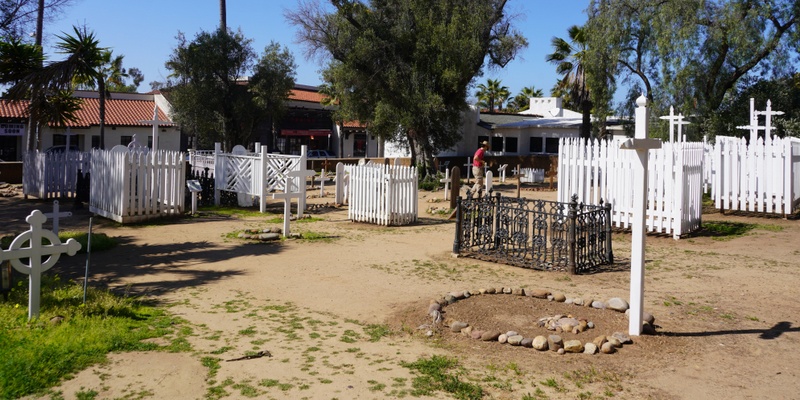
El Campo Cemetery 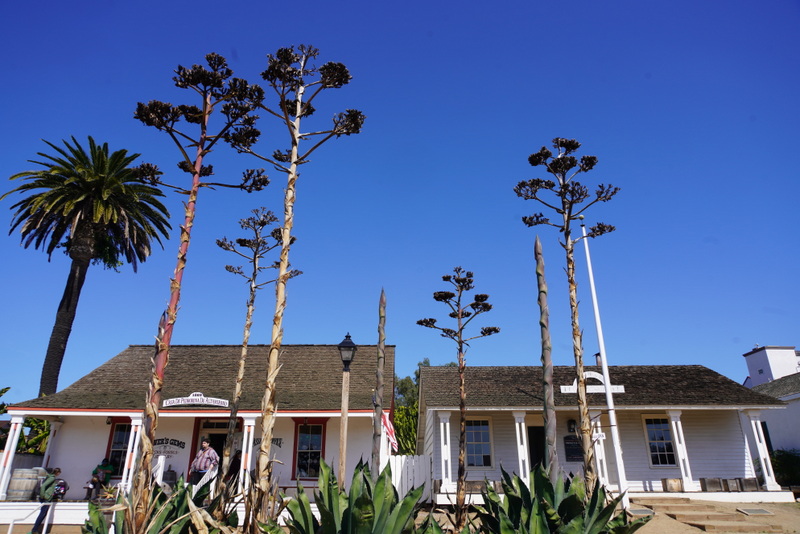
I must have been in the old town during my first visit in 1980. I had been to the Sea World and crossed the border to Tijuana. But the whole place has been smartened up since my last visit.
I strolled around and joined a free guided walk at 2 pm. Our guide has a lovely soft voice and is wonderful and informative. Of all the places I have visited here, I have a few favourites.
I enjoy the El Campo Santo Cemetery, the Whaley House (the first two storeyed brick house in town) and the Catholic Church of Immaculate Conception on San Diego Avenue. The cemetery with over 450 citizens of the city buried here is small but atmospheric.
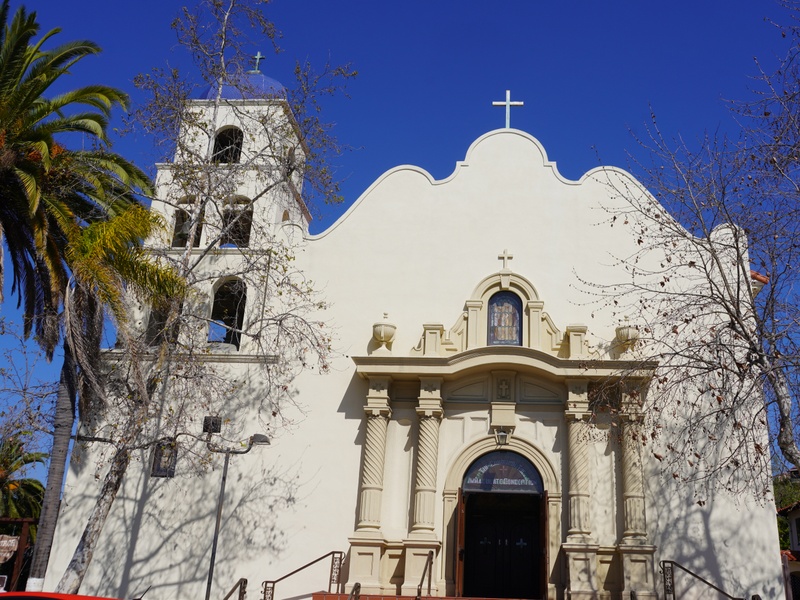
The Cathedral 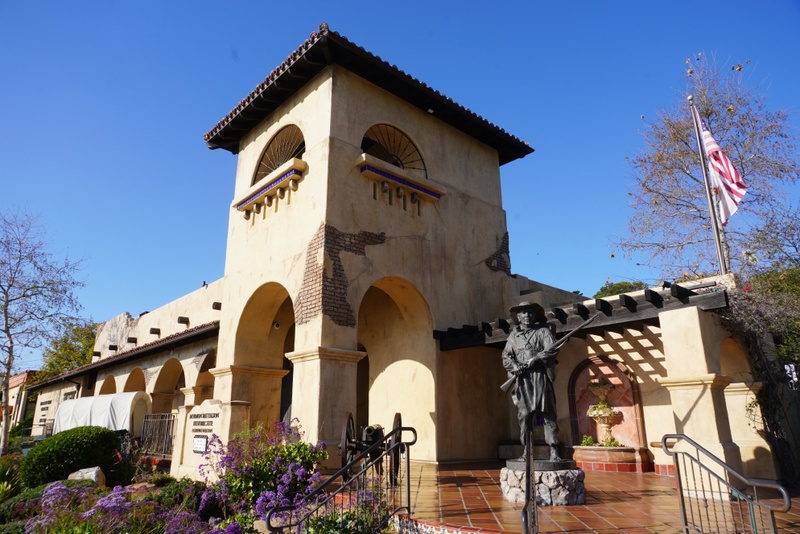
Museum of Mormon Battalion
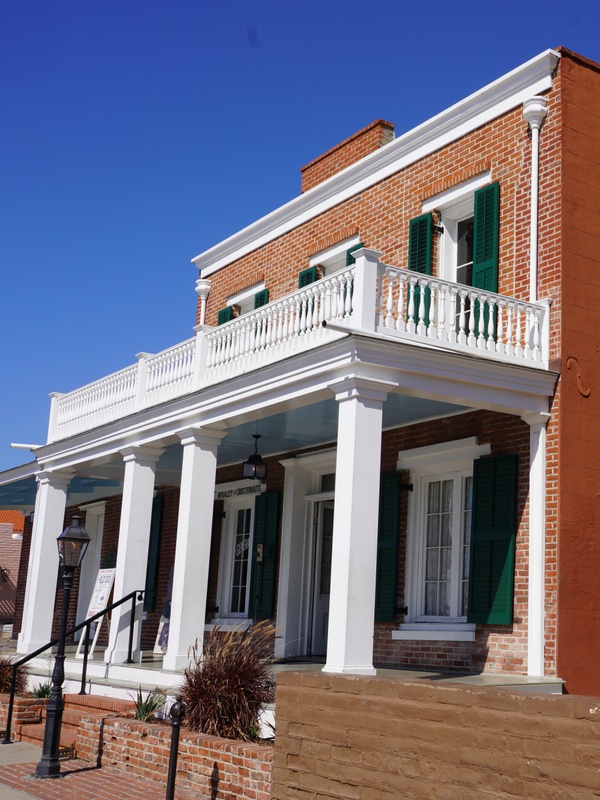
Whaley House 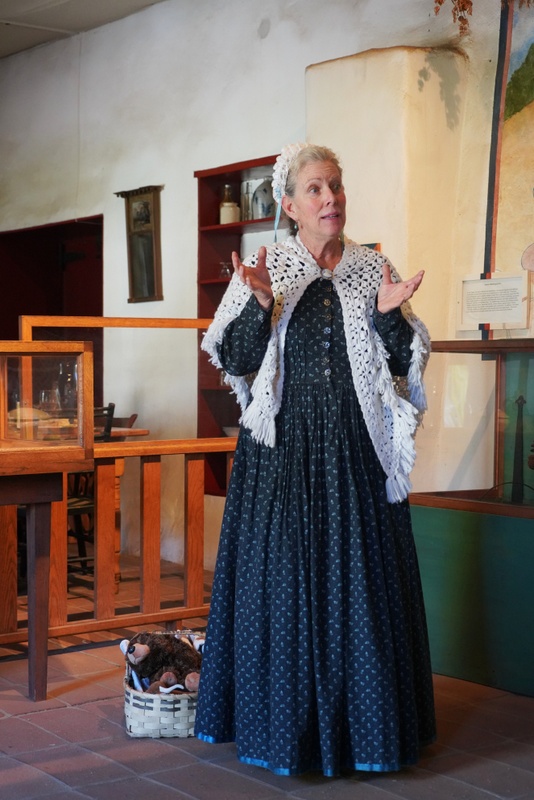
I had a great guided tour
The cathedral is the oldest parish in Alta California. In 1602 with the arrival of Sebastián Vizcaino, the first mass was celebrated at Ballast Point on the feast of San Diego de Alcalá. On July 16, 1769, Father Junipero Serra planted the cross on the hill above Old Town making San Diego the mother of all the missions in California. The Old Adobe Church on Conde Street became the first Catholic Church of the Immaculate Conception in 1848.
The School House Museum (the former Mason Street School) was in operation from 1865 to 1872. The original school house was about 24×30 ft with a 10 ft ceiling. The guide told the wonderful story of Mary Chase Walker from Massachusetts who came to teach here for a year. Her contract was terminated owing to her liberal attitude. But she married the school board president a few months later and lived in the town.
The Seeley Stable is interesting. Albert L Seeley (1822-1898) began the US Mail Stage Line in 1867. He bought the former Bandini residence in 1869 and turned it into Cosmopolitan Hotel which served as a local centre and a stage stop. The stable was built in 1869 to support the transportation services he offered. He continued to prosper till the rapid development of railroad lines across the state. In 1887, he sold his hotel and stable and moved to San Francisco.

Museum of Mormon Battalion 
The Cathedral
There are many interesting exhibits. One of the earliest one is an original ox-drawn carreta from the Spanish Period. A Concord “mud wagon” stagecoach is also on display.
The Museum of Mormon Battalion runs an interactive guided tour which details the history of the Mormon Battalion that walked from the Midwest to here fight during the Mexican-American War in 1846. By the time the Mormons arrived, the war was over. Many later settled here.
I had a pleasant walk in the Heritage Park with several old houses and a synagogue.
Despite all these nice surprises and developments, I was disappointed at the lack of public WiFi in the State Park and the Visitors’ Centre. As a result, I could not purchase a plane ticket online till I was back in the hotel.
My original plan was to take the 4:14 pm bus back to the hotel. Things did not work as planned: when I arrived at the transit centre, the bus had just pulled out of the bay. I signalled the driver and requested him to open the door. He refused. America is not known for punctuality. Was he acting in a reasonable way especially when the bus only runs every 30 minutes and I was late only two to three minutes?
As a result, I had to wait for half an hour and did not get back to the hotel till 5:30 pm. The ticket I found the day before had gone. Most one-way tickets with good connections were now selling above US$ 1600. It was too expensive. Finally, I found a cheap ticket (US$533) which would leave Los Cabos after 2 pm on March 6 and arrive at Gatwick Airport around 11pm on March 7 with change at Los Angeles and Barcelona.
All passengers were back in the hotel on time. We followed Mark and Rachel and took a 15-minute walk to our boat ‘Spirit of Adventure’, our 88-foot long floating home for the next 12 days.
We got onboard before 7 pm. Brian was the captain and has a crew of six. Randall was the chef. We began well with our first dinner on the boat.
Around 9 pm, we set sail with a brief stop at fish platform in the bay. We saw many herons, cormorants, California sea lions and pelicans.
The boat is fairly small with 12 windowless cabins all located below the deck and the engine room at the back. Everything took place in the common area in front of the open kitchen: we had all our meals and lectures/talks here.
I stayed in Cabin 5 with Kathy from California and Annie from Scotland. I had been told to bring ear plugs which I had never used in my life. This time, I put them on but was still bothered by the loud engine noises. I did not sleep well during the entire journey.
Day 3 February 25 Monday: Sailing South
Baja California, a Mexican state on the Baja California Peninsula (the second-longest peninsula in the world) extending approximately 1,220 km in length and 40 to 240 km in width, has an area of 70,113km2 bordering the US state of California. It is one of the best places in the world (if not the best) for whale and dolphin watching.
During this 12-day whale watching trip, we would cruise along the entire 1300-km-long Pacific coast of Baja California before exploring the warm, island-studded waters of the Sea of Cortez.
There is good chance to see blue, humpback, fin, grey and sperm whales, among others. The area also boosts a wide variety of other wildlife including California sea lions, Guadalupe fur seals, northern elephant seals, whale sharks, blue- footed boobies, Laysan and black-footed albatrosses, frigate birds, hummingbirds etc. We would also have shore walks and snorkelling opportunities.
We followed the US time on the boat which is an hour behind the Mexican time. The general routine was breakfast from 6 to 7:30 am; lunch between midday to 2 pm and dinner after 6 pm depending on the activities of the day.
Today, I did not get up till Annie told me to hurry up for breakfast. I was shocked to see it was after 7 am. Most passengers already had their breakfast by the time I sat down in the common room.
Shortly after breakfast, we approached Isla de Todos Santos with many enormous fish tanks scattering in the area which is a hotspot for resting harbour seals and a variety of seabirds. But as fog rolled in, we could not see a thing and had to move on.
I was out in the bow. Ann who was on this trip before, stood next to me and said that she did not see much on the first day during her last trip. Luckily, we had a busy afternoon and saw a lot.
We were excited when Captain Brain said he spotted a big blow in the distance. We sped on. With the aid of sonic system on the boat, our captain is able to locate big whales with high degree of accuracy.
When we reached the target area, Captain Brain stopped and waited. Finally, we sighted our first grey whale of the trip. Of course, we saw many more in the San Ignacio Lagoon later.
The most thrilling moment was when Mark proclaimed the unexpected visitor was false killer whale, one of the leaststudied whales in the world. It was Rachel’s first time to see these mammals too. Half a dozen of them stayed with us for over half an hour. We are very lucky!
We also had great fun with pods of common dolphin and common bottlenose dolphin. I confess I do not know the difference till now.
We saw some birds including the big western gull. I am glad I can recognise the familiar northern fulmar.
Today was my first full day on the boat. I am adaptable and soon settle down in my new routine. I would watch sunrise and sunset, take a shower before dinner, take a beer with my dinner and go to bed between 7:30 and 8 pm.
Day 4 February 26 Tuesday: Isla de San Benitos
We set foot on land for the first time since leaving San Diego in West Benitos, one out of three islands belonging toa tiny remote archipelago. This island has some 20 inhabitants who catch abalones in the area.
We landed on a sandy beach before 10 am and were greeted by an osprey that nested on top of a huge rock at the entrance of the bay. A couple of big northern elephant seals were on the beach too.
Mark took us on a short guided-walk to see a colony of northern elephant seals. Then we were free to do whatever we liked. One could even talk a long walk to the lighthouse.
I was content with a leisure stroll and followed the trail for two kilometres. On the way, I saw California sea lions and Guadalupe fur seals.
I found a couple of abandoned osprey nests. As I saw two ospreys flying across the sky in the distance, I suspected they had built a new nest somewhere not too far away. I therefore continued till I discovered their nest! I set down and watched them through my binoculars for half an hour. A wonderful experience!
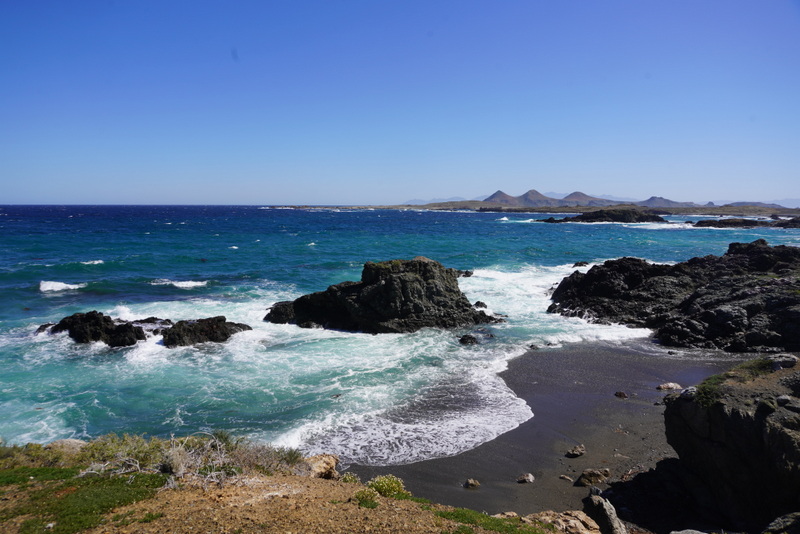
I was back on the boat before 2 pm. We had a good day spotting two fin whales in the afternoon.
Day 5 February 27 Wednesday: San Ignacio Lagoon
Grey Whale
Grey whale, also known as gray whale, gray back whale, Pacific gray whale or California gray whale, is a baleen whale that migrate between feeding and breeding grounds yearly. It reaches a length of about 15 metres and a weight of 36 tonnes and lives between 55 and 70 years. Its name comes from the gray patches and white mottling on its dark skin.
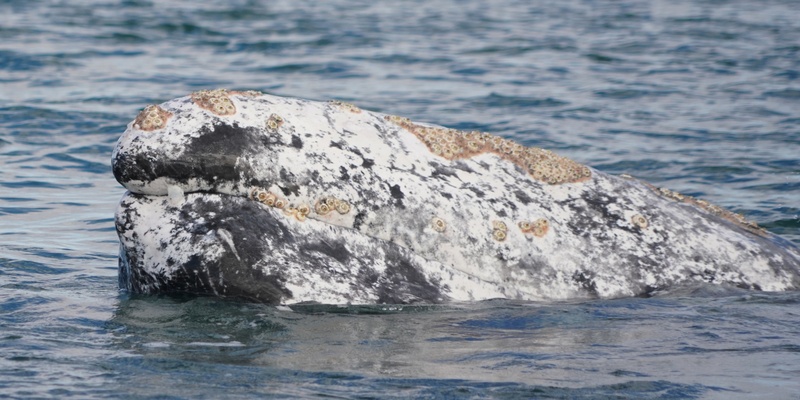
Two Pacific Ocean population are known to exist. One population with less than 200 individuals is presumed to be between the Sea of Okhotsk and southern Korea. The larger population (often referred as the eastern greys) with about 27,000 individuals travels between the waters off northernmost Alaska and Baja California Sur.
Each October, the eastern greys leave their feeding ground in the Bering and Chukchi Seas to start a two- to three- month 8,000 – 11,000 km trip south. By late December to early January, they begin to arrive in the calving lagoons and bays on the west coast of Baja California. The three most popular spots are San Ignacio, Magdalena Bay and Laguna Ojo de Liebre.
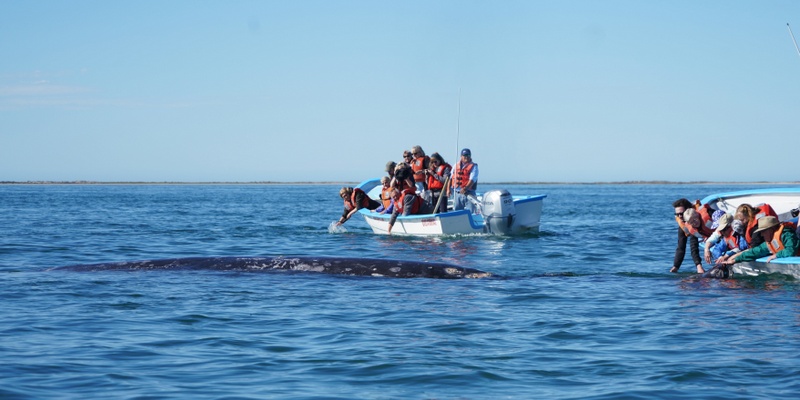
Breeding behaviour of grey whales is complex and often involves three of more animals. Both male and female whales reach puberty at approximately eight years of age. Most females show biennial reproduction. The gestation period is approximately thirteen and a half months. Most calves with a length of 4 metres are born within a six-week time period in mid-January. Females lactate for approximately seven months following birth. The shallow lagoon water is believed to protect the new-born from sharks and orcas.
The lagoons are the best places to observe these whales. The first whales to arrive are usually pregnant mothers looking for the protection of the lagoons to bear their calves along with single females seeking mates. By mid-February to mid-March, the bulk of the population has arrived in the lagoon which is filled with nursing, calving and mating grey whales.
Throughout February and March, the males and females without new calves begin to leave for their feeding ground in the north. By late March or mid- April, most of them would be gone.
Shortly after breakfast, we approached the famous San Ignacio Lagoon, a magical place beside the desert where hundreds of grey whales gather to breed.
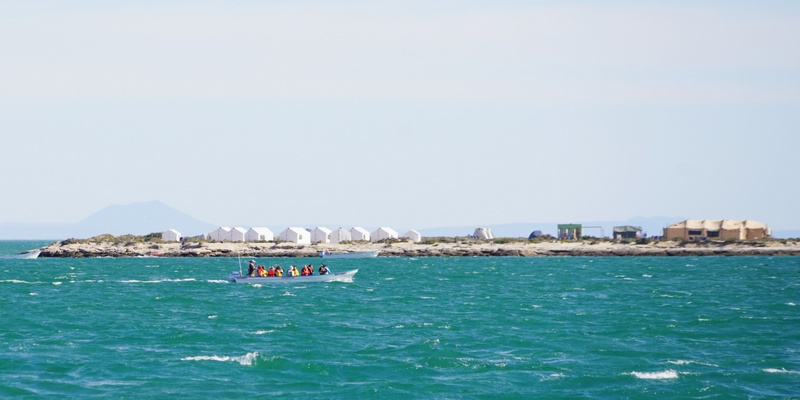
Most of us were on deck to watch countless spouts from grey whales along the sand bank. The captain skilfully steered the boat through the shallow narrow entrance and anchored it in the calm lagoon for the next 35 hours.
Three local fishmen met us with their 22-feet-long pangas. We were all excited on our first panga ride for an hour and a half. Apparently, only 16 pangas are allowed to get in to minimise disturbance to the whales. Mark estimated there might be over 200 whales in the lagoon. We were told to sing and splash water to invite them to come close to our boat. Our efforts worked magic sometimes.
We had our second ride before lunch. This time, a friendly female grey whale came close to the panga with her calf. They nudged the sides and I could see the acorn barnacle and lice on their skin.
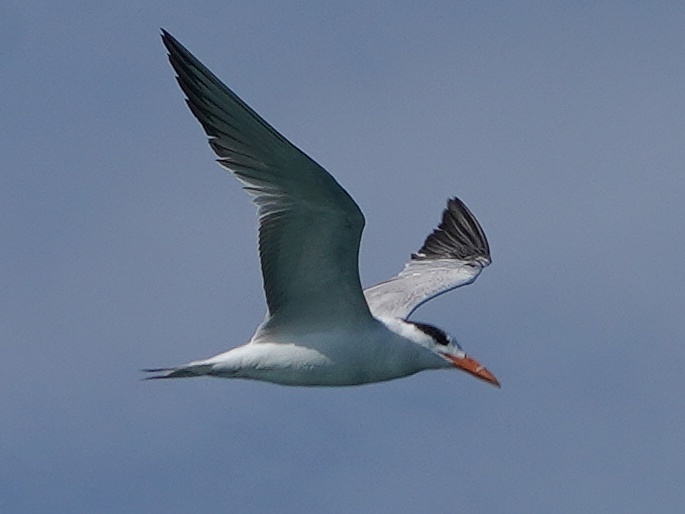
Royal Tern 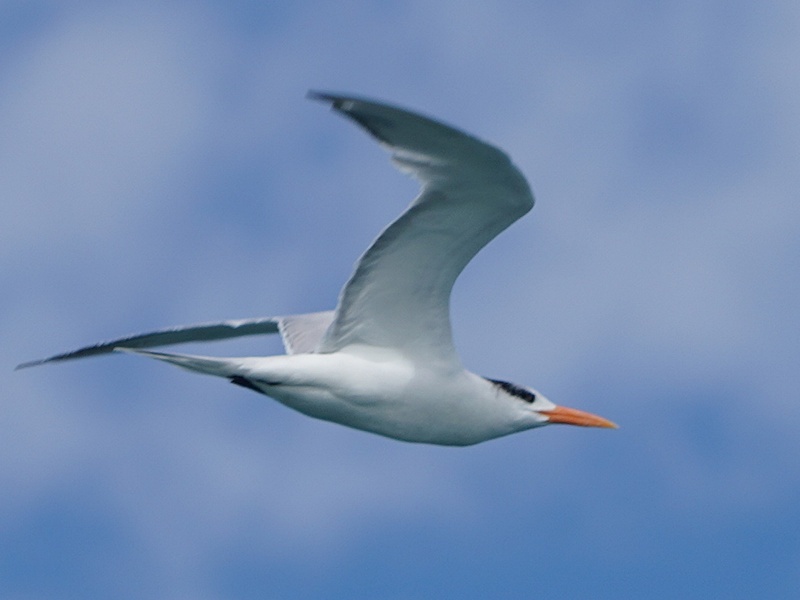
Arctic Tern
After lunch, we had our third and longer cruise. It is magical that I could touch a whale in my life. I find it difficult to express my emotion and gratitude in words.
The whales look so cute and lovely: they like to be touched! When I placed my hand on its head, I was taken by surprise by its smooth and soft skin. This enormous mammal is behaving like a pet and seems to enjoy the encounter as much as we do!
As the sea was flat inside the lagoon, Mark was able to give us a lecture on the grey whale after dinner. He also showed us a video taken since we got onboard.
Apart from grey whales, we also saw in the lagoon green turtle, Pacific Ridley turtle, sea lion and common bottlenose dolphin swimming around. As the engine was off, I was able to have a decent sleep for the first time.
Day 6 February 28 Thursday: San Ignacio Lagoon
I got up early to watch sunrise. It was so peaceful and unearthly beautiful. We had three cruises before leaving the lagoon.
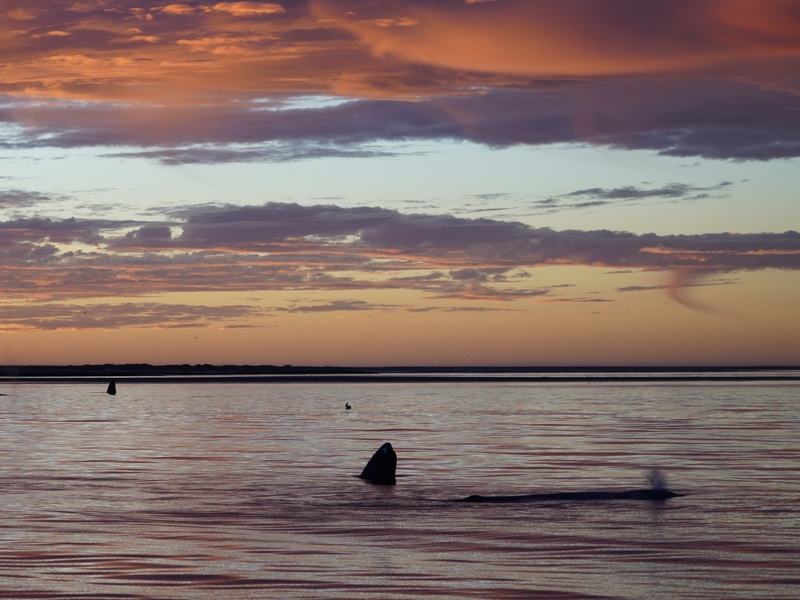
The most unforgettable encounter took place during our last ride. As it was already the sixth whale-watching cruise, I did not have high expectations as I had already seen countless spouts and touched several whales.
We were however lucky to witness how these intelligent whales play tricks on human beings. Three adult grey whales were acting in concert: one nudged the boat at the bow, another came up on the side to be petted and threw a big blow at spectators while the third hop-spied at the back.
Tourists on a boat were preoccupied with the one by the side. They were totally oblivious of the other playful ones at the front and the back of the boat. The whales all look cute yet so surreal!
When they came to our boat, they did not spout nor shower us. Instead, they came up right next to the boat to be touched one moment before going down and reappeared on the other side. They were playing hide-and-seek game with us and we were looking all over to find them!
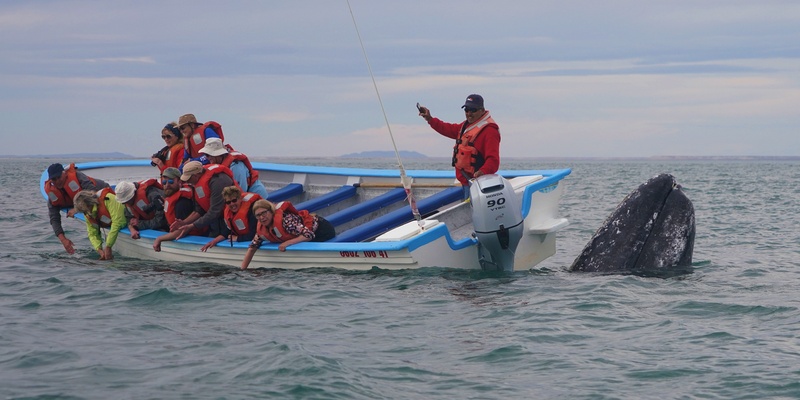
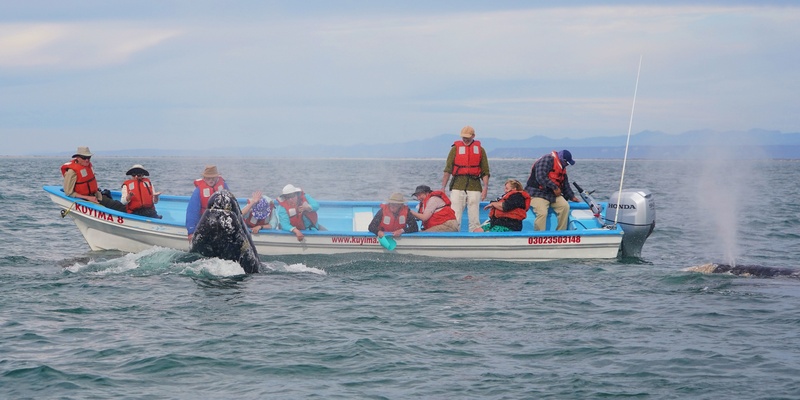
After spending a few minutes with us, the three friendly but mischievous whales went over to the other boats. This time, they sprayed water over our friends several times. I had a hilarious time watching and taking photos of them.
Sadly, we had to depart and continue with our journey south before sunset. As the water at the entrance of the lagoon is very shallow, Captain Brian had to navigate steadily and slowly avoiding the whales as well as the sand bank.
We had a most beautiful sunset. Once out of the lagoon, we saw many common dolphins and bottlenose dolphins.
Day 7 February 29 Friday: Magdalena Bay Area
We spent the whole day watching whales and dolphins in outside the Magdalena Bay which is the southernmost breeding ground for grey whales. Permission is required to get into the bay.
We cruised around a relatively small area. Captain Brian through the sonic system is able to track whales within a certain radius. With his knowledge and experience, he can estimate with great accuracy when and where the whale may surface. We saw a few more grey whales which are no longer strangers.

We started off well with sighting of our first blue whale. I saw two blue whales for the first time in my life in Sri Lanka three years ago. Blue whale does not fluke like humpback whale. But we were lucky to see one showing its fluke before taking a deep dive!
Mark sent his drone up and took some amazing video of the whale. One shot was taken when it was swimming close to the boat: it is just slightly shorter than our 88-feet-long boat possibly about 75-80 feet.
The star of the day was the humpback whale. Before lunch, we spotted several schools of rowdy humpback whales (an estimated total of 15 to 20 whales). They swam close to and around the boat and surfaced at the bow a couple of times.
On a few occasions, we found them swimming under the boat. As we began to learn about their behaviours, we were able to guess where they might surface next.
The water was crystal clear and we could follow them through their blows, bubbles they created before surfacing and their foot prints.
These humpbacks made loud noises as though they were quarrelling and fighting. I watched them chasing each other. This spectacular humpback show lasted for over two hours!
Later on, we watched a large pod of common bottlenose dolphins swimming in the bay. This dolphin with a short and well-defined snout, is the largest species of beaked dolphins.
These dolphins are intelligent with a bigger brain than humans. Their average life expectancy is about 17 years old. An adult is between 2.5 and 3.5m long with a weight between 200 and 500 kg.


